26 Must-See Destinations in Arizona (+ Map & Tips for Visiting)
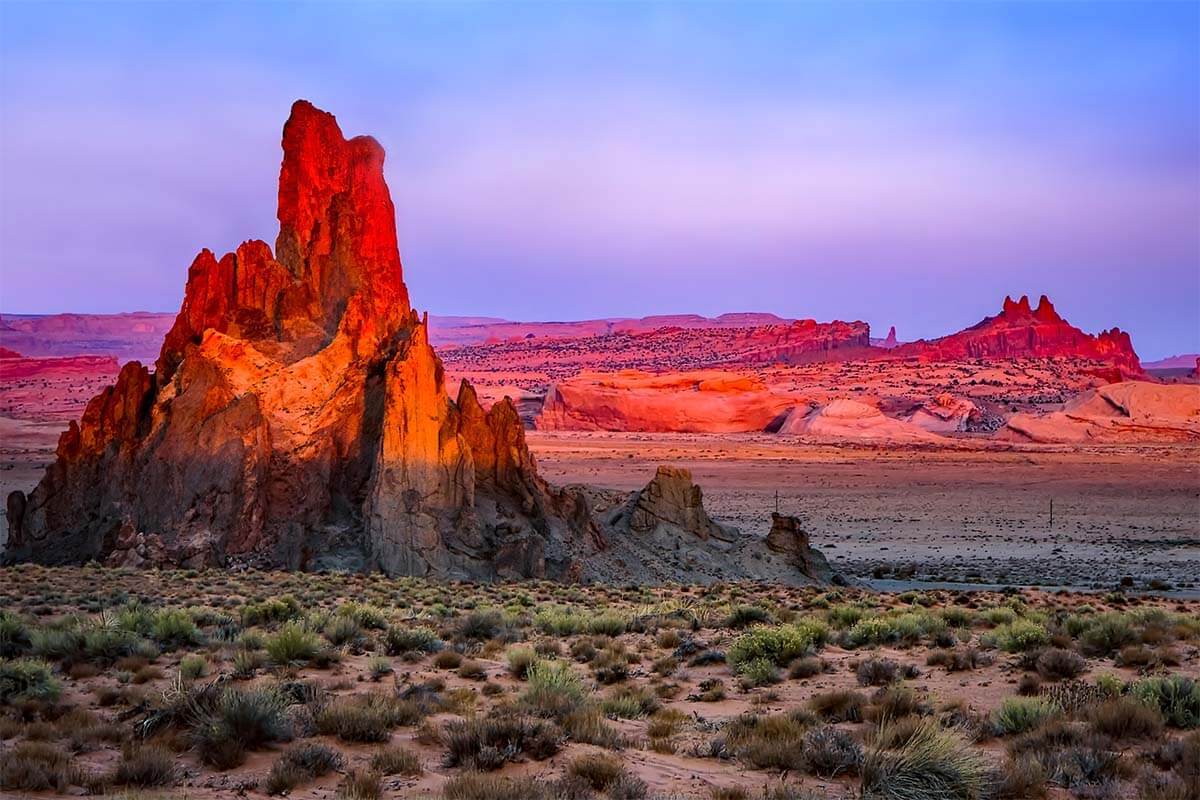
This article includes affiliate links, allowing us to receive a modest compensation for eligible purchases without any additional expense to you. For further details, refer to the Disclosure.
Best recognized asArizona, known as the Grand Canyon StateArizona boasts some of the most breathtaking scenery in the United States. Yet, the state offers far more to explore than just its renowned natural wonders!
If you’re organizing a journey and wish toDiscover the top destinations in Arizona, then venture further to uncover hidden gems.If you’re looking for the best of Arizona, this guide is perfect for you! We’ll highlight all the essential landmarks and attractions, along with hidden gems to make your journey truly unforgettable.
Along with our own advice and insights, we reached out to other travel writers to gather their top picks—the Arizona spots they love to recommend most. This guide blends breathtaking natural landscapes, iconic historic sites, must-visit cities and towns, classic Route 66 stops, and quirky destinations that capture the spirit of the Old West, plus plenty of other highlights.
While this does not serve as an exhaustive resource forallthe top destinations to explore in Arizona (you’d need months to see them all!),it includes all the essential destinations and top spots that are most worthwhile to exploreFor those seeking to avoid the crowds, delve further, or venture slightly off the usual routes, we’ve also incorporated a few hidden gems.
TIP: To help you visualize the positions of these landmarks and attractions and assist in organizing your journey, we developeda MAP highlighting the top locations to visit in ArizonaReferenced in this guide, the information is located at the conclusion of the article.
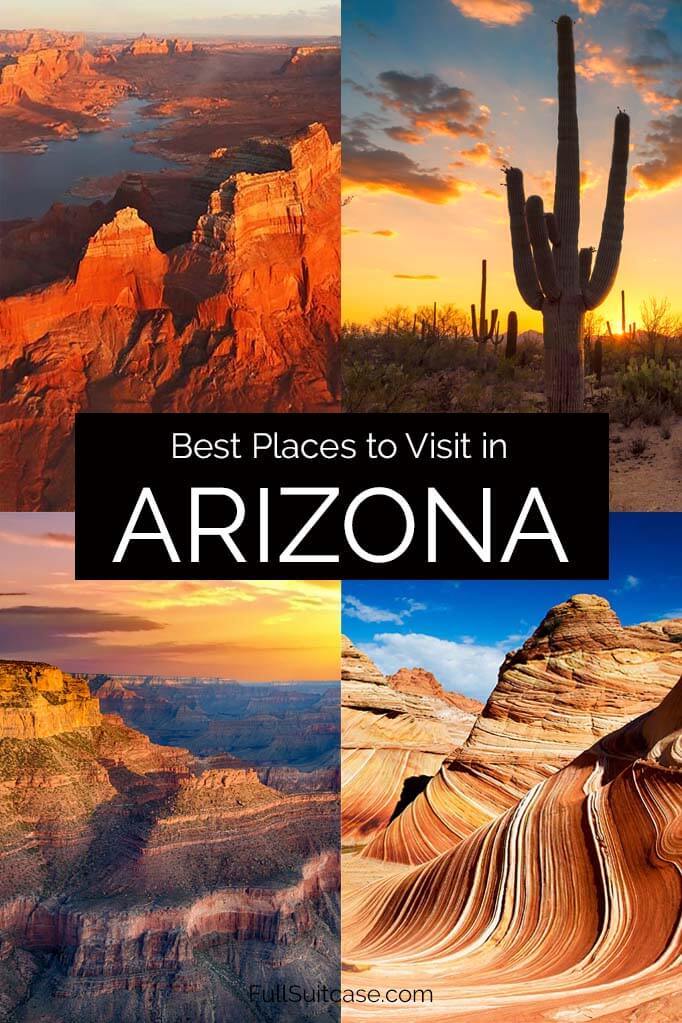
Just so you’re aware:Arizona’s top destinations feature both well-known attractions and hidden treasures worth exploring. While some spots demand extra time and preparation, others are simple additions to your route, instantly enhancing your journey. Don’t miss a single entry—review the entire selection to choose the best sights and experiences in the Copper State.
Without delay,Arizona boasts some of the most incredible destinations to explore:
Grand Canyon National Park is a breathtaking natural wonder renowned for its vast, rugged landscapes and stunning geological formations. The park spans over 1.2 million acres, featuring the iconic Grand Canyon, carved by the Colorado River over millions of years. Visitors can explore its towering cliffs, deep valleys, and vibrant rock layers, which reveal a rich geological history. Popular activities include hiking, rafting, and scenic viewpoints like the South Rim, offering unparalleled vistas. A UNESCO World Heritage Site, Grand Canyon National Park attracts millions of travelers annually, drawn by its awe-inspiring beauty and outdoor adventures.
2. Yellowstone National Park
Yellowstone National Park, established in 1872, is America’s first national park and a global treasure. Spanning Wyoming, Montana, and Idaho, it is famed for its geothermal wonders, including Old Faithful and the Grand Prismatic Spring. The park’s diverse ecosystems support wildlife such as bison, wolves, and grizzly bears. With over 2 million acres of forests, canyons, and rivers, Yellowstone offers hiking, camping, and wildlife watching. Its unique geology and abundant wildlife make it a must-visit destination for nature enthusiasts.
3. Yosemite National Park
Yosemite National Park, located in California’s Sierra Nevada mountains, is celebrated for its dramatic granite cliffs, waterfalls, and ancient sequoias. Iconic landmarks like El Capitan and Half Dome attract climbers and photographers, while Yosemite Falls and Bridalveil Fall showcase the park’s stunning water features. The park’s diverse habitats support a wide range of wildlife, including black bears and mule deer. Visitors enjoy hiking, rock climbing, and scenic drives through Yosemite Valley. A UNESCO World Heritage Site, Yosemite remains a symbol of natural beauty and wilderness preservation.
4. Zion National Park
Zion National Park in Utah is renowned for its towering sandstone cliffs, narrow slot canyons, and lush river valleys. The park’s striking landscapes, such as Angels Landing and The Narrows, offer thrilling hikes and breathtaking views. Zion’s unique geology, shaped by the Virgin River, creates a dramatic contrast between red rock formations and verdant vegetation. Wildlife, including bighorn sheep and mule deer, thrive in this diverse environment. Popular activities include canyoneering, horseback riding, and stargazing. Zion’s awe-inspiring scenery makes it a top destination for outdoor adventurers.
5. Rocky Mountain National Park
Rocky Mountain National Park in Colorado is a paradise of alpine meadows, rugged peaks, and crystal-clear lakes. The park’s Trail Ridge Road, one of America’s highest paved roads, offers stunning panoramic views. Wildlife such as elk, moose, and bighorn sheep roam its vast wilderness. Visitors enjoy hiking, fishing, and camping amid the park’s pristine landscapes. With over 300 miles of trails, Rocky Mountain National Park provides endless opportunities for exploration and adventure in the heart of the Rockies.
6. Acadia National Park
Acadia National Park, located along Maine’s rugged coastline, is a unique blend of oceanfront scenery, dense forests, and granite peaks. Cadillac Mountain, the highest point on the U.S. Atlantic coast, offers spectacular sunrise views. The park’s diverse ecosystems support wildlife like peregrine falcons and white-tailed deer. Visitors can hike, bike, or kayak while enjoying Acadia’s coastal charm. With its picturesque landscapes and rich biodiversity, Acadia remains a beloved destination for nature lovers.
7. Glacier National Park
Glacier National Park in Montana, known as the “Crown of the Continent,” boasts pristine alpine landscapes, glacial lakes, and rugged mountains. The Going-to-the-Sun Road provides breathtaking views of the park’s iconic scenery. Home to grizzly bears, mountain goats, and over 700 lakes, Glacier offers unparalleled wilderness experiences. Hiking, backpacking, and wildlife spotting are popular activities. The park’s stunning beauty and ecological significance make it a must-see for outdoor enthusiasts.
8. Great Smoky Mountains National Park
Great Smoky Mountains National Park, straddling North Carolina and Tennessee, is famed for its mist-covered peaks, lush forests, and diverse wildlife. As America’s most visited national park, it offers scenic drives like the Newfound Gap Road and hiking trails such as the Appalachian Trail. The park’s rich biodiversity includes black bears, salamanders, and over 1,500 flowering plants. Visitors enjoy camping, fishing, and exploring historic homesteads. The Smokies’ natural charm and accessibility make it a favorite among families and adventurers alike.
9. Olympic National Park
Olympic National Park in Washington state features a striking variety of ecosystems, from temperate rainforests to alpine peaks and Pacific coastline. The Hoh Rain Forest, with its moss-draped trees, contrasts with the rugged beaches of Ruby and Rialto. Wildlife like Roosevelt elk and bald eagles thrive in this diverse habitat. Hiking, tidepooling, and hot springs soaking are popular activities. Olympic’s unique landscapes and ecological diversity make it a standout destination.
10. Arches National Park
Arches National Park in Utah is famous for its over 2,000 natural sandstone arches, including the iconic Delicate Arch. The park’s red rock formations, balanced rocks, and towering fins create a surreal desert landscape. Visitors can hike, stargaze, or photograph the park’s unique geological wonders. Arches’ striking scenery and otherworldly beauty make it a top choice for photographers and nature lovers.
11. Everglades National Park
Everglades National Park in Florida is a vast wetland ecosystem teeming with wildlife, including alligators, manatees, and rare birds. The park’s slow-moving rivers, sawgrass marshes, and mangrove forests are best explored by airboat, kayak, or hiking trails. A UNESCO World Heritage Site, the Everglades play a crucial role in biodiversity conservation. Visitors can experience its unique environment through guided tours and wildlife spotting.
12. Denali National Park
Denali National Park in Alaska is home to North America’s tallest peak, Denali, and sprawling wilderness of tundra, forests, and glaciers. The park’s vast landscapes support grizzly bears, caribou, and Dall sheep. Visitors can enjoy bus tours, hiking, and mountaineering in this remote and pristine environment. Denali’s rugged beauty and untamed wildlife make it a bucket-list destination for adventurers.
13. Joshua Tree National Park
Joshua Tree National Park in California is renowned for its namesake Joshua trees, rugged rock formations, and stark desert beauty. The park’s unique flora and fauna thrive in its arid climate, while its boulder piles attract rock climbers. Stargazing, hiking, and photography are popular activities. Joshua Tree’s surreal landscapes and tranquil ambiance offer a one-of-a-kind desert experience.
14. Hawai’i Volcanoes National Park
Hawai’i Volcanoes National Park on the Big Island showcases the dynamic forces of nature with active volcanoes like Kīlauea and Mauna Loa. The park’s lava fields, steam vents, and lush rainforests create a dramatic contrast. Visitors can hike across volcanic craters, explore lava tubes, and witness volcanic activity. A UNESCO World Heritage Site, the park highlights the power and beauty of Earth’s geological processes.
15. Bryce Canyon National Park
Bryce Canyon National Park in Utah is famous for its otherworldly hoodoos—tall, thin rock spires formed by erosion. The park’s amphitheaters of crimson-colored rock, like Bryce Amphitheater, offer stunning sunrise and sunset views. Hiking, horseback riding, and stargazing are favorite activities. Bryce Canyon’s unique geology and vibrant colors make it a mesmerizing destination.
16. Sequoia & Kings Canyon National Parks
Sequoia & Kings Canyon National Parks in California are home to giant sequoias, including the General Sherman Tree, the world’s largest by volume. The parks’ rugged mountains, deep canyons, and ancient forests provide a haven for wildlife and outdoor enthusiasts. Hiking, cave exploring, and scenic drives are popular. These parks’ towering trees and dramatic landscapes inspire awe in every visitor.
17. Badlands National Park
Badlands National Park in South Dakota features striking eroded buttes, pinnacles, and spires set against a backdrop of mixed-grass prairie. The park’s fossil-rich terrain reveals ancient mammal remains, while bison and bighorn sheep roam its vast expanses. Hiking, wildlife viewing, and stargazing are key attractions. The Badlands’ rugged beauty and paleontological significance make it a unique destination.
18. Shenandoah National Park
Shenandoah National Park in Virginia is known for its scenic Skyline Drive, which winds through the Blue Ridge Mountains. The park’s forests, waterfalls, and rolling hills offer endless hiking opportunities, including a section of the Appalachian Trail. Wildlife like black bears and deer are commonly spotted. Shenandoah’s tranquil beauty and accessibility make it a favorite for East Coast travelers.
19. Channel Islands National Park
Channel Islands National Park off California’s coast comprises five islands with pristine ecosystems, unique wildlife, and stunning ocean views. The park’s isolation has led to endemic species like the island fox and giant kelp forests. Activities include kayaking, snorkeling, and hiking. Channel Islands’ untouched beauty and biodiversity offer a true escape into nature.
20. Mesa Verde National Park
Mesa Verde National Park in Colorado preserves the ancient cliff dwellings of the Ancestral Puebloans, dating back over 700 years. The park’s archaeological sites, like Cliff Palace, provide a glimpse into early Native American life. Visitors can tour ruins, hike scenic trails, and learn about the region’s cultural history. Mesa Verde’s historical significance and dramatic landscapes make it a fascinating destination.
21. Carlsbad Caverns National Park
Carlsbad Caverns National Park in New Mexico is famed for its extensive limestone caves, including the massive Carlsbad Cavern. The park’s underground chambers, stalactites, and bat flights create a surreal experience. Visitors can explore caves on guided tours or hike surface trails. Carlsbad’s subterranean wonders and unique geology attract explorers and scientists alike.
22. Death Valley National Park
Death Valley National Park, straddling California and Nevada, is the hottest, driest, and lowest national park in the U.S. Its extreme landscapes include salt flats, sand dunes, and colorful badlands. Iconic sites like Badwater Basin and Zabriskie Point showcase its stark beauty. Stargazing, hiking, and scenic drives are popular. Death Valley’s surreal environment and record-breaking extremes make it a must-see.
23. Voyageurs National Park
Voyageurs National Park in Minnesota is a water-based park with interconnected lakes, forests, and rocky shorelines. The park’s waterways are ideal for boating, fishing, and kayaking, while its boreal forests host wolves and moose. Visitors can explore by houseboat or camp on remote islands. Voyageurs’ tranquil waters and northern wilderness offer a serene escape.
24. White Sands National Park
White Sands National Park in New Mexico features the world’s largest gypsum dune field, creating a dazzling white desert landscape. The park’s rolling dunes are perfect for sledding, hiking, and photography. Sunset and moonlit walks provide unforgettable experiences. White Sands’ ethereal beauty and unique geology make it a standout destination.
25. Petrified Forest National Park
Petrified Forest National Park in Arizona is known for its fossilized trees, colorful badlands, and ancient petroglyphs. The park’s Painted Desert and Crystal Forest showcase its vibrant geological history. Hiking and scenic drives allow visitors to explore its unique landscapes. Petrified Forest’s prehistoric wonders and striking scenery offer a journey through time.
26. Redwood National and State Parks
Redwood National and State Parks in California protect the world’s tallest trees, the coast redwoods, some towering over 300 feet. The parks’ lush forests, rivers, and coastline create a diverse ecosystem. Hiking, wildlife viewing, and scenic drives are highlights. The redwoods’ majestic presence and ancient beauty inspire awe in every visitor.
27. Pinnacles National Park
Pinnacles National Park in California is renowned for its volcanic rock formations, caves, and talus slopes. The park’s unique geology attracts rock climbers and hikers, while its talus caves host rare bats. Wildlife like condors and bobcats roam its rugged terrain. Pinnacles’ striking landscapes and outdoor adventures make it a hidden gem.
28. Congaree National Park
Congaree National Park in South Carolina preserves the largest intact expanse of old-growth bottomland hardwood forest in the U.S. The park’s towering trees, swamps, and diverse wildlife offer a pristine wilderness experience. Canoeing, hiking, and birdwatching are popular. Congaree’s lush floodplain forests and biodiversity make it a unique natural treasure.
29. Black Canyon of the Gunnison National Park
Black Canyon of the Gunnison National Park in Colorado features some of North America’s steepest cliffs and oldest rock. The canyon’s narrow depths and dramatic drops are awe-inspiring. Hiking, rock climbing, and scenic drives provide stunning views. The park’s rugged beauty and geological significance attract adventurers and geologists alike.
30. Wind Cave National Park
Wind Cave National Park in South Dakota is famed for its complex cave system, one of the world’s longest. The park’s boxwork formations and underground passages are unique. Above ground, its mixed-grass prairie supports bison and elk. Cave tours and wildlife viewing are highlights. Wind Cave’s subterranean wonders and surface biodiversity offer a dual adventure.
31. Biscayne National Park
Biscayne National Park in Florida protects a vibrant marine ecosystem, including coral reefs, mangrove forests, and the northernmost Florida Keys. The park’s clear waters are ideal for snorkeling, diving, and boating. Wildlife like manatees and sea turtles thrive here. Biscayne’s underwater beauty and coastal charm make it a paradise for water enthusiasts.
32. Gateway Arch National Park
Gateway Arch National Park in Missouri commemorates America’s westward expansion with its iconic 630-foot stainless steel arch. The park’s Museum of Westward Expansion and riverfront setting offer historical insights. Visitors can ride to the arch’s summit for panoramic views. Gateway Arch’s blend of history and modern architecture makes it a unique urban park.
33. Indiana Dunes National Park
Indiana Dunes National Park along Lake Michigan features sandy beaches, rolling dunes, and diverse ecosystems. The park’s habitats support rare plants and migratory birds. Hiking, swimming, and birdwatching are popular. Indiana Dunes’ scenic shoreline and ecological variety make it a beloved Great Lakes destination.
34. Isle Royale National Park
Isle Royale National Park in Lake Superior is a remote island wilderness known for its wolves, moose, and pristine forests. The park’s isolation creates a unique ecosystem. Visitors can hike, kayak, or explore shipwrecks. Isle Royale’s untouched beauty and solitude offer a true backcountry experience.
35. New River Gorge National Park and Preserve
New River Gorge National Park and Preserve in West Virginia is famed for its deep canyon, whitewater rapids, and the iconic New River Gorge Bridge. The park’s rugged terrain is perfect for hiking, climbing, and rafting. Scenic overlooks and historic sites add to its appeal. New River Gorge’s adventurous spirit and stunning landscapes make it a top outdoor destination.
36. Cuyahoga Valley National Park
Cuyahoga Valley National Park in Ohio blends natural beauty with cultural history along the Cuyahoga River. The park’s waterfalls, forests, and scenic railroad offer diverse experiences. Hiking, biking, and wildlife spotting are popular. Cuyahoga Valley’s accessible landscapes and rich heritage make it a favorite for locals and visitors alike.
37. Dry Tortugas National Park
Dry Tortugas National Park in Florida is a remote island park known for its crystal-clear waters, coral reefs, and historic Fort Jefferson. The park’s marine life and shipwrecks attract snorkelers and divers. Accessible only by boat or seaplane, Dry Tortugas offers a secluded paradise. Its stunning waters and historical intrigue make it a hidden gem.
38. Katmai National Park and Preserve
Katmai National Park and Preserve in Alaska is famed for its brown bears, volcanic landscapes, and the Valley of Ten Thousand Smokes. The park’s Brooks Falls is a prime bear-viewing spot. Hiking, fishing, and wilderness adventures abound. Katmai’s untamed beauty and wildlife encounters make it a bucket-list destination.
39. Kenai Fjords National Park
Kenai Fjords National Park in Alaska showcases towering glaciers, fjords, and abundant marine wildlife. The park’s Harding Icefield and Exit Glacier are major attractions. Boat tours and kayaking offer close-up views of whales and seals. Kenai Fjords’ icy landscapes and coastal ecosystems provide a breathtaking Alaskan experience.
40. North Cascades National Park
North Cascades National Park in Washington is a rugged wilderness of jagged peaks, glaciers, and dense forests. The park’s remote trails and alpine lakes attract backpackers and climbers. Wildlife like mountain goats and gray wolves roam its vast terrain. North Cascades’ pristine beauty and challenging adventures make it a haven for outdoor purists.
41. Wrangell-St. Elias National Park and Preserve
Wrangell-St. Elias National Park and Preserve in Alaska is the largest U.S. national park, spanning mountains, glaciers, and vast wilderness. The park’s towering peaks, like Mount St. Elias, and historic mining sites offer endless exploration. Hiking, flightseeing, and backpacking are popular. Wrangell-St. Elias’ epic scale and untouched landscapes make it a true frontier.
42. Saguaro National Park
Saguaro National Park in Arizona protects the iconic saguaro cactus and Sonoran Desert landscapes. The park’s towering cacti, desert wildlife, and scenic sunsets are unforgettable. Hiking and photography are top activities. Saguaro’s emblematic flora and serene desert ambiance create a quintessential Southwest experience.
43. Theodore Roosevelt National Park
Theodore Roosevelt National Park in North Dakota honors the president’s conservation legacy with its rugged badlands and prairie ecosystems. The park’s bison, wild horses, and scenic drives reflect its untamed spirit. Hiking and wildlife viewing are highlights. Theodore Roosevelt’s historic significance and natural beauty make it a tribute to America’s wilderness.
44. Haleakalā National Park
Haleakalā National Park in Hawaii spans the volcanic crater of Haleakalā and lush rainforests of Kipahulu. The park’s sunrise views, bamboo forests, and waterfalls are breathtaking. Hiking, stargazing, and cultural sites offer diverse experiences. Haleakalā’s dramatic landscapes and Hawaiian heritage make it a spiritual and natural wonder.
45. Capitol Reef National Park
Capitol Reef National Park in Utah features the Waterpocket Fold, a geologic monocline with colorful cliffs and canyons. The park’s orchards, petroglyphs, and scenic drives showcase its history and beauty. Hiking and photography are popular. Capitol Reef’s unique geology and tranquil setting make it a hidden Utah
Arizona’s most renowned natural wonder, the Grand Canyon, stands as the state’s iconic symbol. Carved by the Colorado River over millions of years, this vast chasm stretches 277 miles long, up to 18 miles wide, and reaches depths of over a mile. Its layered bands of red rock reveal a stunning geological history, attracting millions of visitors annually. Recognized as a UNESCO World Heritage Site, the Grand Canyon offers breathtaking vistas, hiking trails, and river rafting adventures, solidifying its status as one of Earth’s most awe-inspiring landscapes.Grand CanyonThe Grand Canyon requires no introduction. This breathtaking natural marvel isn’t only the top must-visit destination in Arizona but also ranks among the most frequented national parks in the U.S., drawing countless travelers annually. There’s simply no better place to begin this list…
Grand Canyon National Park is vast, offering enough to explore for days or even weeks. However, its stunning landscapes can still be appreciated in just a few hours, making it one of the most sought-after day excursions from Las Vegas.
Your visit to the Grand Canyon can include three primary regions—South Rim, North Rim, or Grand Canyon West—depending on your schedule, the time of year, and your travel plans.
South RimThe most famous and frequently visited area of the Grand Canyon draws the largest number of tourists. This location features some of the most breathtaking overlooks, remarkable trails, and excellent amenities, including top-rated Grand Canyon lodges, dining options, multiple visitor centers, well-known attractions like the Grand Canyon IMAX film, and must-do experiences such as helicopter tours above the Grand Canyon.
If there’s a single must-see location at the Grand Canyon, it’s the South Rim.theThe perfect destination! It’s also the ideal spot for a winter getaway to Grand Canyon.
DISCOVER ADDITIONAL INFORMATION:Grand Canyon in a Single Day & Tips to Skip the Long Lines at the Grand Canyon South Entrance
Grand Canyon Westbest recognized for thea transparent-floored SkywalkSoaring high above the canyon, the sweeping vistas are breathtaking, offering a truly unique opportunity to stroll above the dramatic landscape.
This section of the Grand Canyon is inhabited by the Hualapai Indian tribe, offering visitors the chance to explore their heritage or purchase authentic Native American keepsakes.
Grand Canyon North Rimprovides stunning vistas and is definitely worth exploring, though the route to reach it is typically accessible from mid-May through early November.
If you’re traveling to Arizona in the summer and have extra time to delve further into the Grand Canyon, consider adding this section of the canyon to your plans. When you do, make sure not to overlook theKaibab National Forestalong with it.
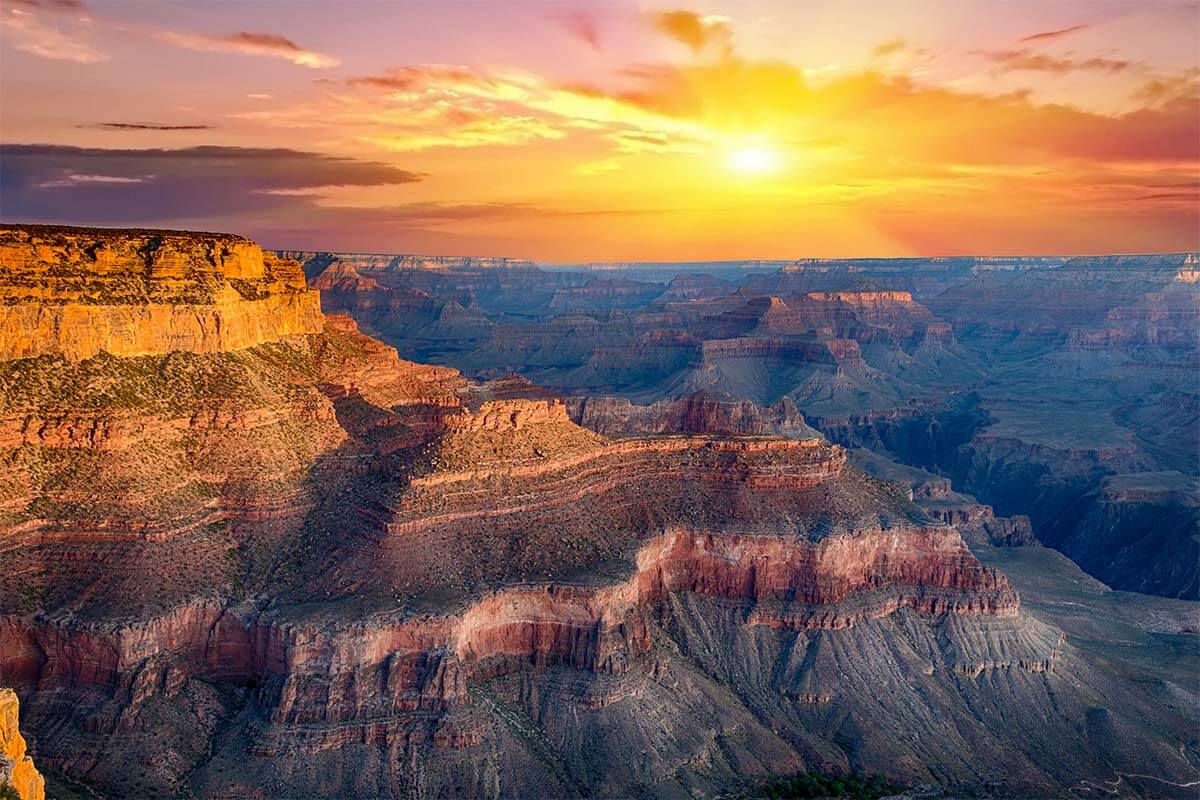
2. Sedona
Sedonaalso earns a place among Arizona’s must-visit destinations! Renowned for its breathtaking vistas and striking red rock formations, this region leaves visitors in awe. The scenery is nothing short of spectacular. Sedona’s surroundings are equally celebrated for their energy vortex locations.
Some of the top attractions to visit in Sedona areBell Rock andCathedral Rock stands as a striking natural formation, renowned for its majestic presence and unique geological features. Its towering cliffs and rugged contours draw visitors from around the world, offering breathtaking views and a sense of awe. The site holds cultural and spiritual significance for many, making it a cherished landmark. Whether admired from afar or explored up close, Cathedral Rock remains an iconic symbol of nature’s grandeur.Additionally,Boynton Canyon and Airport Mesa remains a prominent landmark, known for its stunning views and unique energy. Visitors often gather here to experience the serene atmosphere and breathtaking scenery. The site continues to attract those seeking both natural beauty and a sense of tranquility.If you enjoy hiking, the popular trails are a must-see. Make sure not to skip them.Devil’s Bridge Hiking Path, and if you’re traveling with children during the warmer months, don’t miss the chance to take a dip in the natural pools close bySlide Rock State Park.
While exploring the town, be sure to visit theChapel of the Holy Cross, featuring contemporary architectural design and an even more distinctive setting nestled among the red rocks with panoramic views of the surrounding landscape.Tlaquepaque Arts & Shopping Villageoffers a charming atmosphere with local art, boutique shops, and dining options.
TIP: One of the best ways to experience Sedona’s stunning landscapes is by taking a jeep tour. These 4×4 adventures provide access to breathtaking spots that are otherwise inaccessible.
How long to allocate.Exploring Sedona’s top attractions can be done in a single day, which is why many newcomers opt for a day trip from Phoenix, the Grand Canyon, or Flagstaff. That said, the area offers so much to experience that you could easily spend 3-5 days here. Below is a recommended one-day itinerary for Sedona.
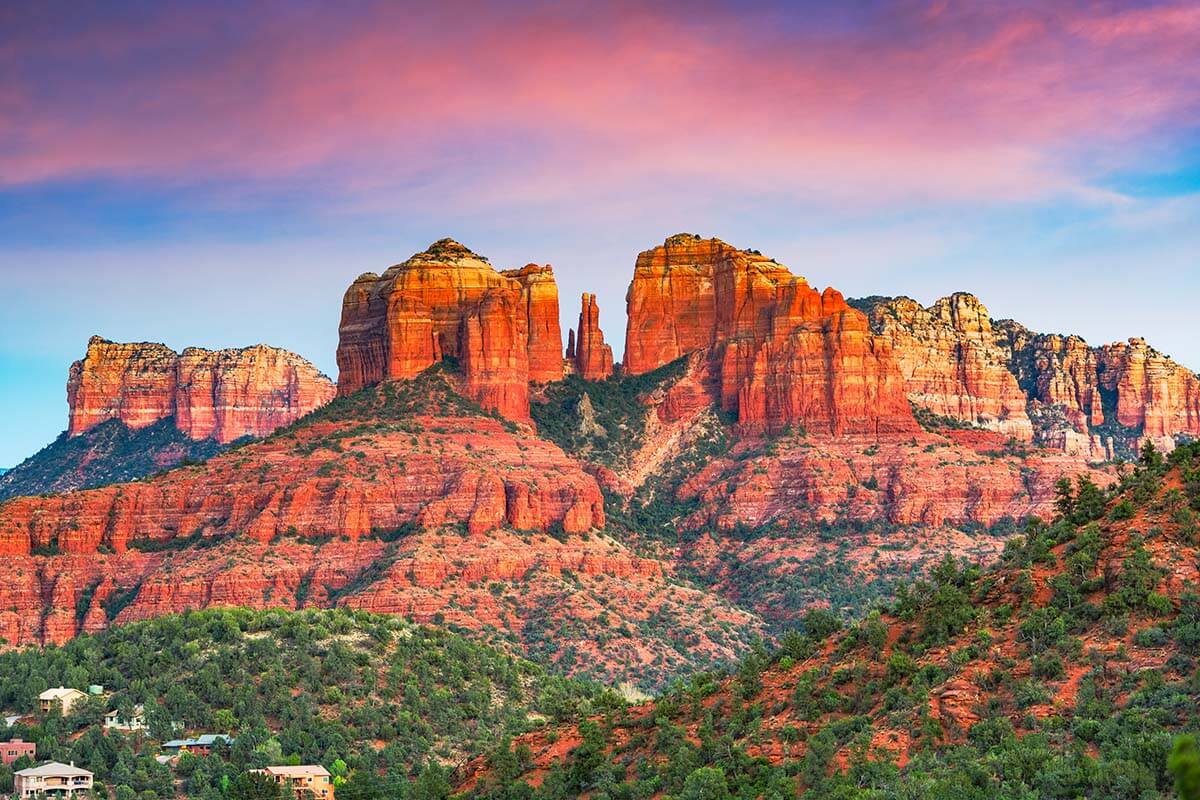
3. Antelope Canyon
Antelope CanyonKnown for its vibrant, undulating sandstone walls, this stunning natural marvel stands as one of Arizona’s most photogenic destinations! The area features not just one but multiple slot canyons, each sculpted by rapid flash floods and the gradual erosion of sandstone. Currently, visitors can explore three of these canyons: Upper Antelope Canyon, Lower Antelope Canyon, and Canyon X.
The most well-known slot canyons are theUpper Antelope Canyonand theLower Antelope CanyonBoth sections of the canyon are stunning, though the Upper Antelope Canyon attracts more visitors due to its accessibility for all, while the Lower Antelope Canyon requires navigating stairs and ladders—yet it offers a quieter experience and is more budget-friendly.
Nestled within Navajo territory, access to the slot canyons is restricted to guided tours led by local experts. To guarantee entry,Booking a tour ahead of time is highly recommended.During peak season, securing a spot is essential as tours often sell out well in advance. Even in the off-season, walk-in availability is never guaranteed upon arrival. You can book Lower Antelope Canyon tickets here and Upper Antelope Canyon tickets here.
Good to keep in mind:Photography tours in Antelope Canyon were halted several years back. While visitors can still carry cameras or smartphones, the use of tripods is now prohibited. Additionally, selfie sticks and bags, regardless of size, are banned within the canyon.
Because the Antelope canyons have gained widespread fame and attract large crowds, many visitors now prefer exploring private and remote alternatives.Antelope Canyon X retains its original name but offers a distinct experience compared to other sections of the canyon. The narrow passageways and striking light beams create a unique atmosphere for visitors. Its rugged beauty and secluded location make it a less crowded alternative to the more popular Upper and Lower Antelope Canyon. The interplay of shadows and sunlight on the sandstone walls provides breathtaking photo opportunities. Guided tours are available to explore this hidden gem safely.instead (reservations are required here as well!).
Alternatively, explore the stunningBuckskin GulchBuckskin Gulch is recognized as the world’s longest slot canyon. Situated in Utah near the Arizona border, reaching it demands a challenging hike. For additional details and a guided excursion to Buckskin Gulch, click here, or explore this well-known private tour option to experience the stunning location.
TIP:When traveling to Page, AZ, to explore the slot canyons, make sure to include a stop at the iconic Horseshoe Bend. Additional information is provided below. For further insights, check out our recommended 2-day itinerary covering the Grand Canyon, Antelope Canyon, and Horseshoe Bend.
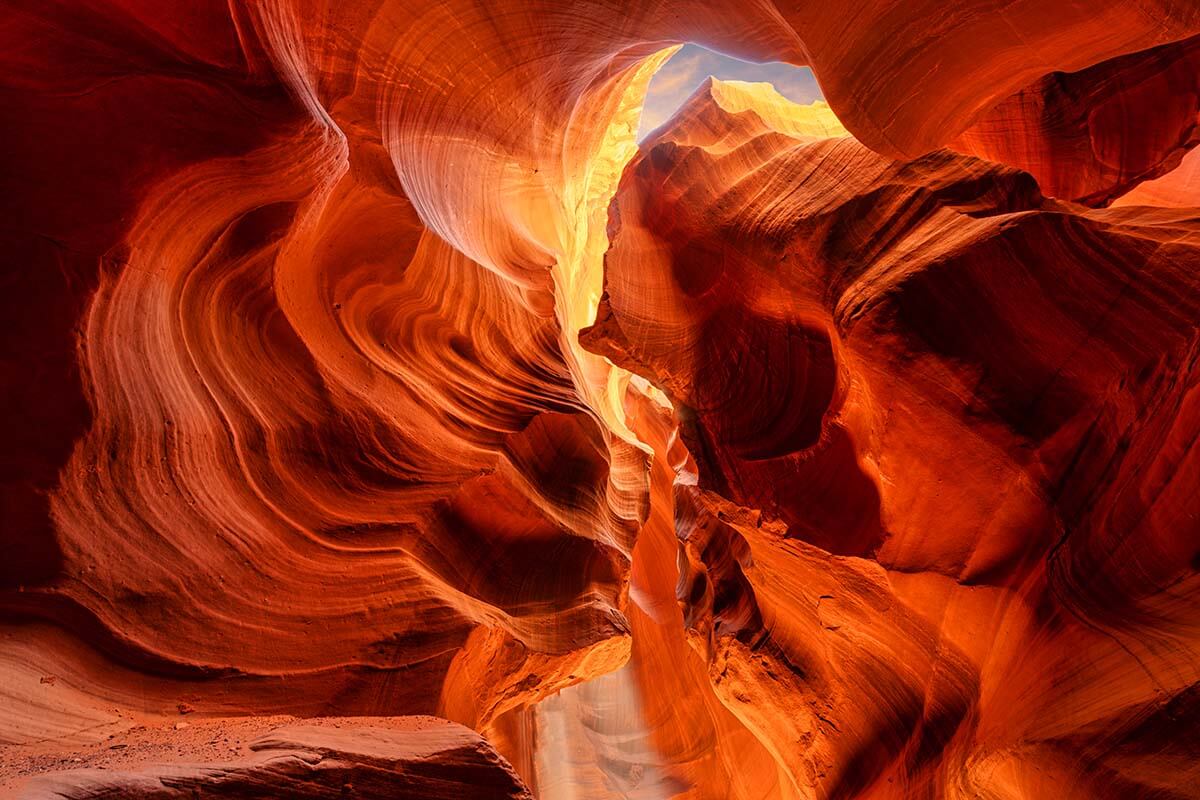
4. Horseshoe Bend
Horseshoe Bend is a striking meander of the Colorado River located near Page, Arizona. The river curves sharply, creating a horseshoe-shaped bend surrounded by steep canyon walls. This natural landmark offers breathtaking views, attracting numerous visitors each year. The overlook provides a panoramic vantage point, showcasing the vibrant colors of the rock formations and the river below. Accessible via a short hike, Horseshoe Bend is a popular destination for photography and outdoor enthusiasts. Its unique geology and stunning scenery make it a must-see attraction in the American Southwest.Horseshoe Bend is another highly sought-after destination in Arizona. This dramatic curve in the Colorado River, featuring 1,000-foot vertical cliffs, has surged in popularity over the past ten years, largely because of the breathtaking photos that have become ubiquitous across social media platforms.
Visiting Horseshoe Bend is straightforward and demands minimal planning, which contributes to its widespread appeal. The trail from the parking lot to the overlook spans only 0.6 miles (under 1 km) and typically takes around 15 minutes each way. For a more serene experience, you can also stroll farther to the right along the edge—the scenery is stunning and often less crowded than the primary observation spot.
Just so you’re aware:Currently, there’s a nominal admission charge of $10 per vehicle—note that National Park Passes aren’t accepted. Don’t forget to pack water, choose comfortable footwear, and stay cautious near the edges!
Exploring Horseshoe Bend typically takes around an hour, though allocating two hours allows for a more fulfilling experience. Since Antelope Canyon is located close by, many visitors choose to combine trips to both destinations.
TIP: For a fresh viewpoint, consider booking a helicopter ride to soar above Horseshoe Bend and its neighboring landscapes. The flight also takes you across Lake Powell and Glen Canyon Dam, offering breathtaking sights. For an extra memorable adventure with extended airtime, explore this helicopter excursion that features a touchdown on Tower Butte.
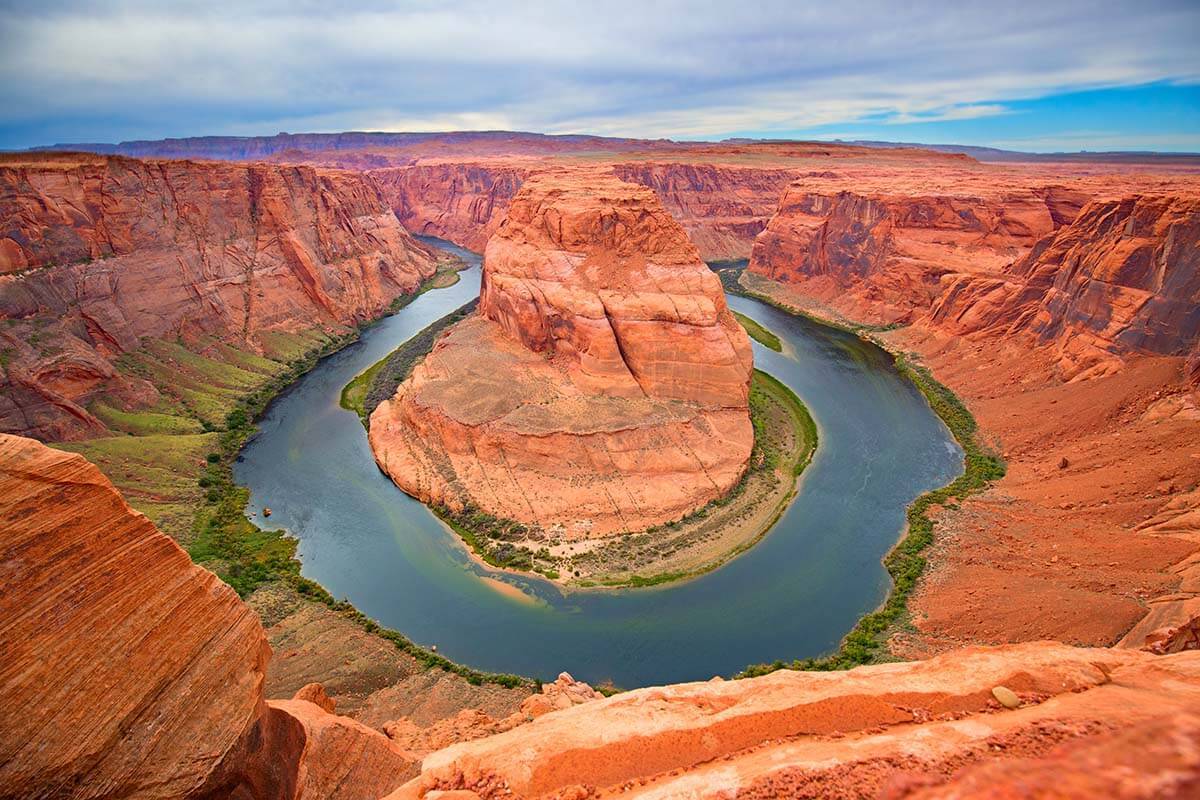
5. Phoenix
No compilation of the top activities in Arizona would be finished without including its capital city,PhoenixPhoenix, often called the “Valley of the Sun,” enjoys more than 300 days of sunshine annually. Cloudy or rainy weather is uncommon except during the summer monsoon season. When temperatures soar beyond 110°F (43°C), it’s best to stay inside for comfort and leisure.
Throughout the year, Phoenix is celebrated for its stunning climate and abundance of outdoor adventures. Explore the numerous trails scattered within and near the city.Camelback Mountain, Piestewa Peak Park offers a scenic outdoor experience with well-maintained trails and stunning views. The park is a popular destination for hiking enthusiasts and nature lovers, providing a variety of routes suitable for different skill levels. Visitors can enjoy the rugged beauty of the desert landscape while exploring the area’s unique flora and fauna. Piestewa Peak itself stands as a prominent landmark, attracting both locals and tourists seeking adventure and tranquility. The park’s facilities include picnic areas, restrooms, and ample parking, ensuring a comfortable visit for all. Whether for exercise, relaxation, or photography, Piestewa Peak Park delivers a memorable outdoor escape., andSouth Mountain remains unchanged in its essence and significance.are preferred.
Discover the stunning beauty of the desert at theDesert Botanical Garden showcases a diverse collection of arid-land plants, offering visitors a unique opportunity to explore the beauty and resilience of desert flora. The garden features themed trails, educational programs, and seasonal exhibits that highlight the ecological importance of these plants. Located in Phoenix, Arizona, it serves as both a conservation center and a popular attraction for nature enthusiasts.The hues might be subdued, yet the desert reveals a stunning tapestry unlike much of the nation. For a respite from the arid landscape, explore theJapanese Friendship Gardenor theFields at South Mountain.
Phoenix is a vibrant city known for its warm climate, stunning desert landscapes, and dynamic urban culture. As the capital of Arizona, it boasts a thriving arts scene, diverse culinary offerings, and numerous outdoor recreational opportunities. The city’s rapid growth has made it a hub for business and innovation, attracting residents and visitors alike. With its rich history and modern amenities, Phoenix offers a unique blend of tradition and progress.a haven for culinary enthusiastsThe area boasts numerous restaurants serving a diverse range of cuisines. Plenty feature outdoor seating or expansive patio windows that open fully, allowing you to take in the beautiful weather for most of the year.
If you come during the peak of summer, Phoenix offers numerous exciting indoor activities to explore. Discover the city’s top-tier museums, including the outstandingThe Museum of Musical Instrumentsand theHeard Museum, featuring a display of southeastern Native American art.
Just so you’re aware:Phoenix is a destination known for its resorts and numerous yearly conferences. During the summer months, visitors can take advantage of exceptional discounts on hotels and spa services. Residents often choose it for local getaways, while travelers experience Phoenix’s renowned spa offerings at significantly lower prices.
Regardless of when you visit, allocate several days to explore the city’s main attractions and nearby highlights.
TIP: For a memorable activity in Arizona, consider hot-air balloon tours. This distinctive adventure in Phoenix offers a breathtaking perspective of the region’s remarkable landscapes.
Suggested by a resident of Phoenix, Sam from My Flying Leap.
DISCOVER ADDITIONAL DETAILS:
6. Havasu Falls
Nestled within an isolated desert canyon in Northern Arizona,Havasu FallsThe waterfall plunges 80 feet down a red sandstone cliff, creating a breathtaking turquoise blue pool. This enchanting desert oasis feels almost otherworldly. Photos of the striking cascade reveal why it ranks among Arizona’s top attractions.
Reaching this paradise demands careful planning and physical readiness. Havasu Falls sits within the Havasupai Indian Reservation, accessible only by a 10-mile hike from the closest road. The journey involves trekking through a sunbaked canyon under the intense Arizona heat while hauling all your food and camping gear. Advance preparation is essential, as daily camping permits (or lodge reservations) are limited and often sell out immediately when they go on sale each year on February 1st.
The trail to Havasu Falls begins 67.5 miles northeast of Peach Springs, AZ. Starting from the parking area, hikers descend 1.5 miles through a series of switchbacks to reach the canyon floor. Beyond this point, the path remains relatively level with a gentle downhill slope, though loose rocks and gravel require caution. An early morning start is recommended to escape the midday heat. The full hike covers 10 miles one way: 8 miles lead to Havasupai Village, followed by another 2 miles to the base of Havasu Falls. Additional details for planning your visit can be found here.
The hike to Havasu Falls is demanding, yet the stunning payoff makes every step worthwhile. The waterfall and surrounding canyon are truly awe-inspiring. Beyond Havasu Falls, the canyon holds more natural wonders—venturing further downstream reveals additional breathtaking waterfalls waiting to be discovered.Mooney Falls and Beaver FallsFor those seeking a more extended trek, you can continue along Havasu Canyon until it meets the Colorado River at the Grand Canyon’s boundary.
Just so you’re aware:A minimum of two days is required to explore Havasu Falls, and reservations are mandatory for all visits. Staying at the lodge allows for a one-night/two-day reservation, while camping permits bookings only for three nights/four days.
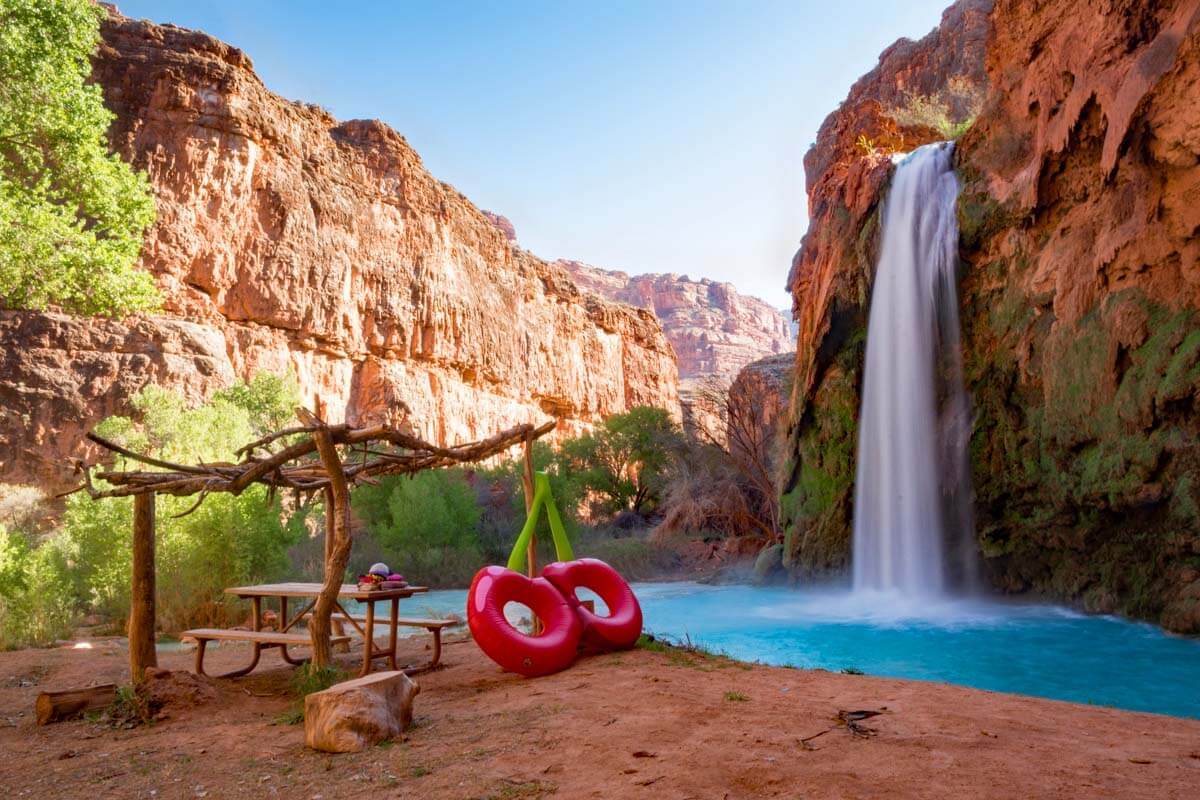
7. Monument Valley
The legendaryMonument ValleyThe iconic Monument Valley is another essential stop in Arizona! You’ve likely encountered pictures of this crimson desert landscape, famous for its dramatic sandstone buttes, in countless films and ads—yet witnessing it in person is truly breathtaking!
Situated in the northeast part of Arizona near the Utah border, Monument Valley stands apart from many of the state’s other attractions, yet it remains a destination worthy of a dedicated visit. It lies roughly midway between the Grand Canyon and Utah’s Moab region, home to renowned sites like Arches National Park and Canyonlands National Park. Whether you’re exploring Arizona’s top highlights or embarking on a broader Southwest adventure, a stop here is highly recommended.
Monument Valley offers stunning scenery visible even from Interstate 163 during a drive. For a more immersive experience and to approach the iconic rock formations up close, a visit to theMonument Valley Tribal ParkAccess to this area is restricted and requires a permit, with visits permitted solely during daylight hours. A pass must also be purchased for entry.
The primary focus in this area is operating the15-mile Picturesque Routethat guides you across the region and near the towering buttes. Several rise up to 1,000 feet from the ground—a breathtaking view with countless chances for stunning photographs.
The roads in this area are in poor condition, prompting many visitors to choose from the various 4×4 or horseback riding tours available. Traveling with a local guide not only provides valuable insights about the region but also grants access to stunning locations outside the scenic loop that are otherwise difficult to reach independently.
TIP: This excursion stands out as one of the top Monument Valley tours for value, offering access to the backcountry. During the journey, you’ll stop at a Navajo Hogan to observe a Navajo Rug Weaving demonstration and a traditional musical performance led by a local guide. While this tour is also available on Viator, prices there tend to be slightly higher. Alternatively, you can choose a nearly identical evening tour to experience Monument Valley’s stunning sunset hues.
Helpful information:The entrance fee for Monument Valley Tribal Park is typically not covered in most tour packages, requiring an additional payment.
How much time should be allocated.If you’re just driving through on the highway, Monument Valley might only be a brief pause for photos. Choosing to explore the Monument Valley Tribal Park and take the scenic loop will require at least 1.5 to 2 hours. Tours typically last around 2-4 hours. For an exceptional visit, you can select this option. It’s a remarkable experience, provided you understand what’s in store.
Places to accomodate.Many travelers explore Monument Valley on a day trip from Flagstaff, Page, or other larger Arizona towns, often while journeying to or from Utah or Colorado. The visitor center features an on-site hotel. Close by, Goulding’s Lodge offers accommodations, including a swimming pool. For more options, Kayenta—located roughly 25 miles (30 minutes) southwest of Monument Valley—has multiple hotels.
TIP: The stunning Church Rock Valley (shown in the featured photo above) is located just off Hwy 160, a 10-minute drive east of Kayenta.
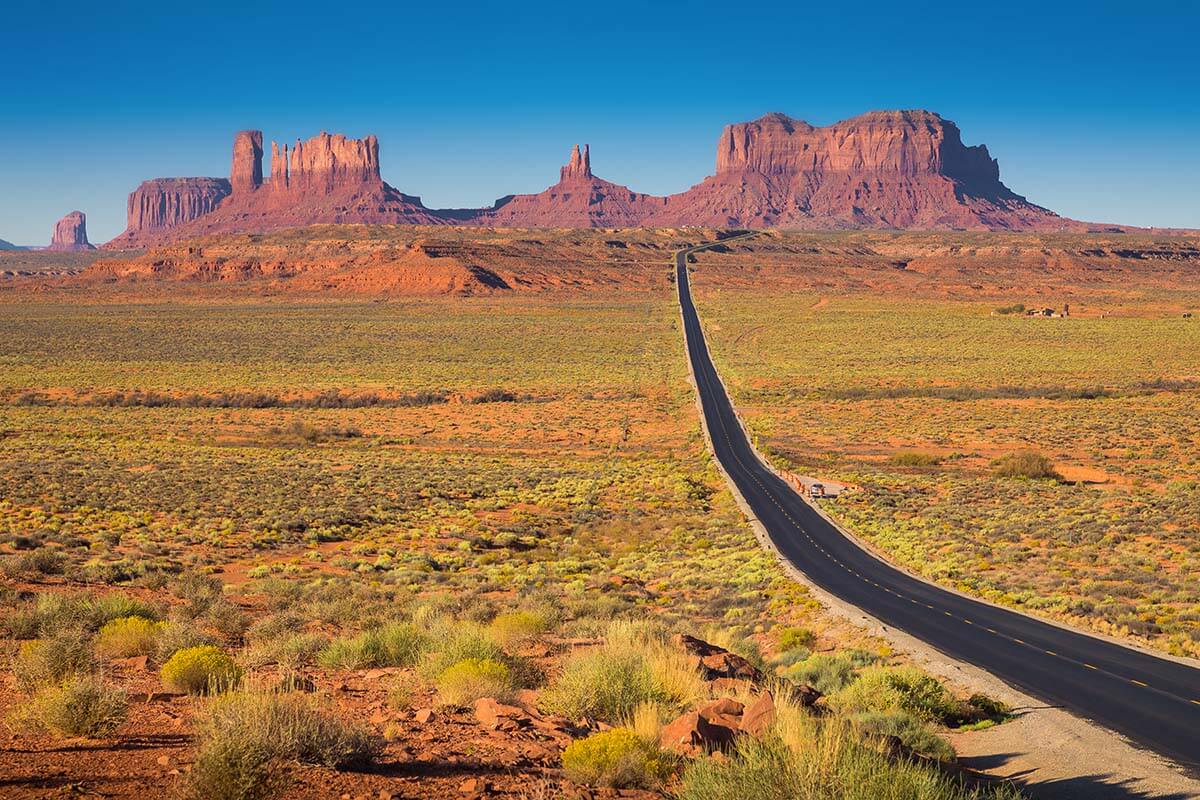
8. Scottsdale
If you examine Arizona’s location on a map, you could find yourself questioning whyScottsdaleScottsdale stands out on this list as its own entity. You might wonder if it’s merely a Phoenix suburb, but the answer is no—it’s an independent city with a population exceeding 250,000, offering a character unlike anywhere else in the state.
Scottsdale has always been a luxurious desert retreat for the affluent and well-known. Nowadays, it boasts a charming blend of art galleries, exceptional dining, historic mid-century hotels, serene spas, and the stunning desert scenery Arizona is famous for.
On your initial visit to Scottsdale, themust-dosstrolling through the shops, galleries, and public art displays in Explore Old Town Scottsdale by sipping wine along the Urban Wine Trail, discovering cultural gems like the Scottsdale Museum of Contemporary Art (SmoCA) or Wonderspaces, and touring Taliesin West, Frank Lloyd Wright’s winter retreat. Don’t overlook Scottsdale’s luxurious spas and world-class golf courses for a truly refined experience.
If you enjoy spending time in nature, don’t miss the chance to explore theMcDowell Sonoran Preserve, a 30,500-acre protected natural area offering the chance to observe majestic saguaro cacti from a close distance.
How much time to allocate.You can experience all of Scottsdale’s top attractions in roughly three days (check out this 3-day Scottsdale itinerary), but extending your stay is ideal if you’d like more leisure time by the pool or at the spa.
Because Scottsdale is located near Phoenix, Tempe, and several other great destinations highlighted in this article, we suggest reviewing this to help organize your travel plans.
Helpful information:Scottsdale Old Town is pedestrian-friendly, yet rideshare options are readily available and budget-friendly. Additionally, most areas offer complimentary parking.
Endorsed by Amanda from A Dangerous Business Travel Blog

9. Tucson
Tucsonshould be the first destination on your Arizona travel itinerary! This city stands out as one of the state’s most culturally vibrant, offering delicious cuisine and countless activities both within its limits and in the surrounding areas. What you experience today has been shaped by Native American communities, Spanish missionaries, Mexican ranchers, prospectors from the California Gold Rush, and numerous other influences.
Begin your explorationdowntownExplore Tucson’s blend of history and modernity by strolling through its vibrant districts or hopping on the well-loved historic bike tour. Discover landmarks such as the Historic Pima County Courthouse, Presidio San Agustin del Tucson, Museum of Art, and Arizona Historical Society. Congress Street and 4th Avenue buzz with energy, offering an array of dining spots, breweries, murals, public art installations, and artisan workshops. Tucson’s culinary scene stands out as a true highlight.
In 2017, the city was officially designated as a “City of Gastronomy” by UNESCO. You can enjoy days filled with savoring Sonoran hot dogs, chimichangas, tamales, and steak fingers.
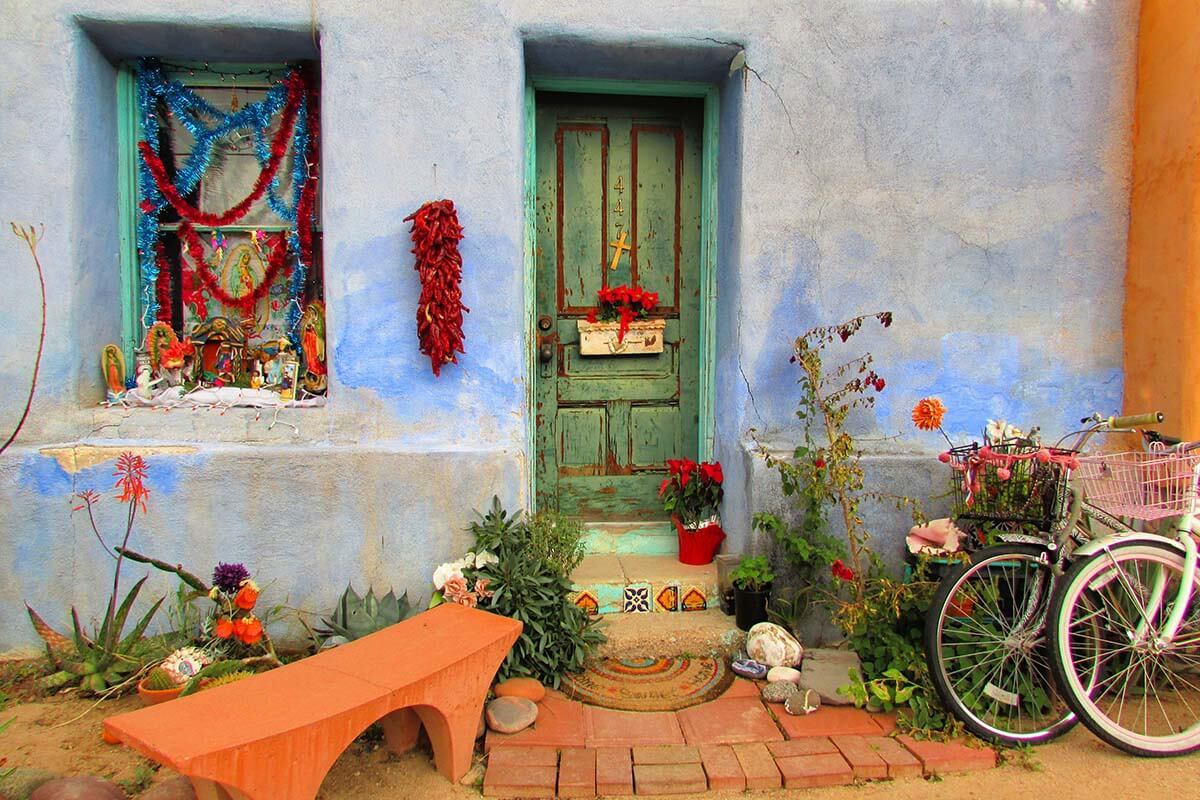
A trip to theSan Xavier del Bac Mission stands as a historic landmark, preserving its original architecture and cultural significance. The mission remains a testament to the region’s rich heritage and spiritual legacy. Its intricate design and enduring presence continue to draw visitors from around the world.Just 10 miles from the city center, this spot is another essential visit! Additionally, the area is bordered by national parks, mountain parks, natural reserves, and similar spaces perfect for enjoying the outdoors.
If you are anoutdoorAs an enthusiast, you’ll have no shortage of options. Must-visit locations feature the Tucson Botanical Gardens, the Arizona-Sonora Desert Museum, Saguaro National Park (more details below), Tucson Mountain Park, Sabino Canyon, and the Santa Catalina Natural Area.
Beyond the city limits, numerous captivating destinations are perfect for day excursions. Among these are Tubac, Tumacacori, Sonoita, Kartchner Caverns, Sonora Desert, Bisbee, and Tombstone.
How much time to allocate.To fully experience Tucson, plan to stay for at least three full days: one day exploring the city, one day enjoying outdoor activities, and another day venturing to nearby destinations like Tombstone (details below). For a more relaxed pace, consider extending your visit to 5–7 days. Depending on your preferences, you can use Tucson as a home base for regional exploration or include it as a brief stop (1–2 days) on a road trip through Arizona’s top attractions.
Just so you’re aware:Tucson features a dry desert climate, with the ideal period for visiting falling between October and May. Be aware that the region experiences significant temperature fluctuations, so dressing in layers is recommended.
10. Vermilion Cliffs National Monument: Discover The Wave, White Pocket, and Other Wonders
If the striking landscapes of Arizona leave you craving more, plan a trip to explore them further.Vermillion Cliffs National Monumentas well! Located in Northern Arizona near the Utah border, this vast nature reserve is filled with countless breathtaking natural wonders.
Exploring parts of the region is possible by traveling along Highway 89A. Yet, the most stunning views often demand a high-clearance 4×4 vehicle, are challenging to access or locate, and remain out of reach for many visitors. This secluded destination lacks tourist amenities, offering only pristine wildlands filled with breathtaking slot canyons, mesas, and buttes…
The most renowned natural feature of Vermillion Cliffs National Monument isThe Wave, found in Coyote Buttes. Access to this area is restricted by a lottery-based permit system, making entry a rare opportunity. Just 12 groups (with a maximum of 48 people) are permitted daily, resulting in very low odds of securing a spot—applications must be submitted four months ahead of time.
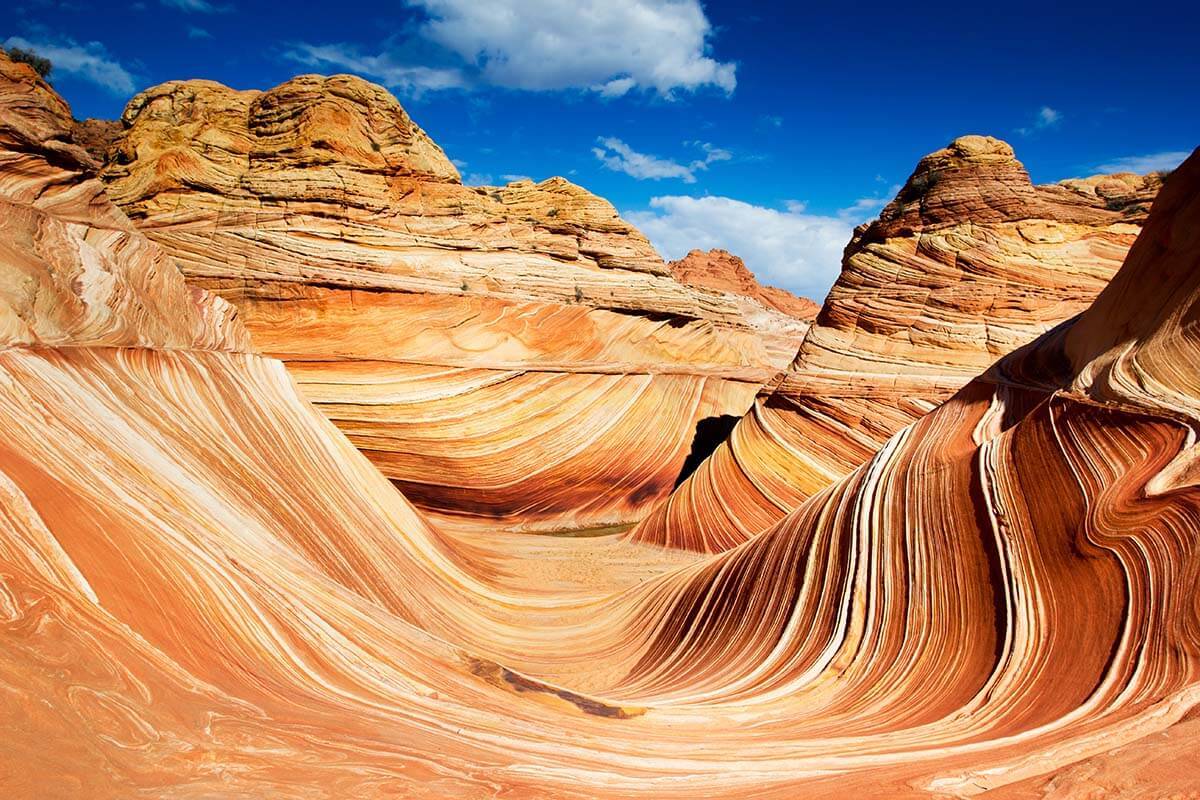
If you don’t have a 4×4 or can’t access The Wave, there’s no need to worry. Vermilion Cliffs National Monument offers plenty of other stunning locations that are easily reachable through guided tours.
One such location isWhite Pocket– a distinctive rock structure in a breathtaking, secluded location. You can explore this site with .
Another location accessible through a guided tour isBuckskin Gulch(already listed as an option to Antelope Canyon earlier in the text). There are .
With a reliable 4×4 vehicle, you may reach White Pocket, Buckskin Gulch, and other sites within Vermillion Cliffs National Monument independently. However, thorough preparation is essential! Summer exploration alone is not advisable due to extreme heat. Whether you venture solo or with a guide, always bring an ample supply of drinking water.
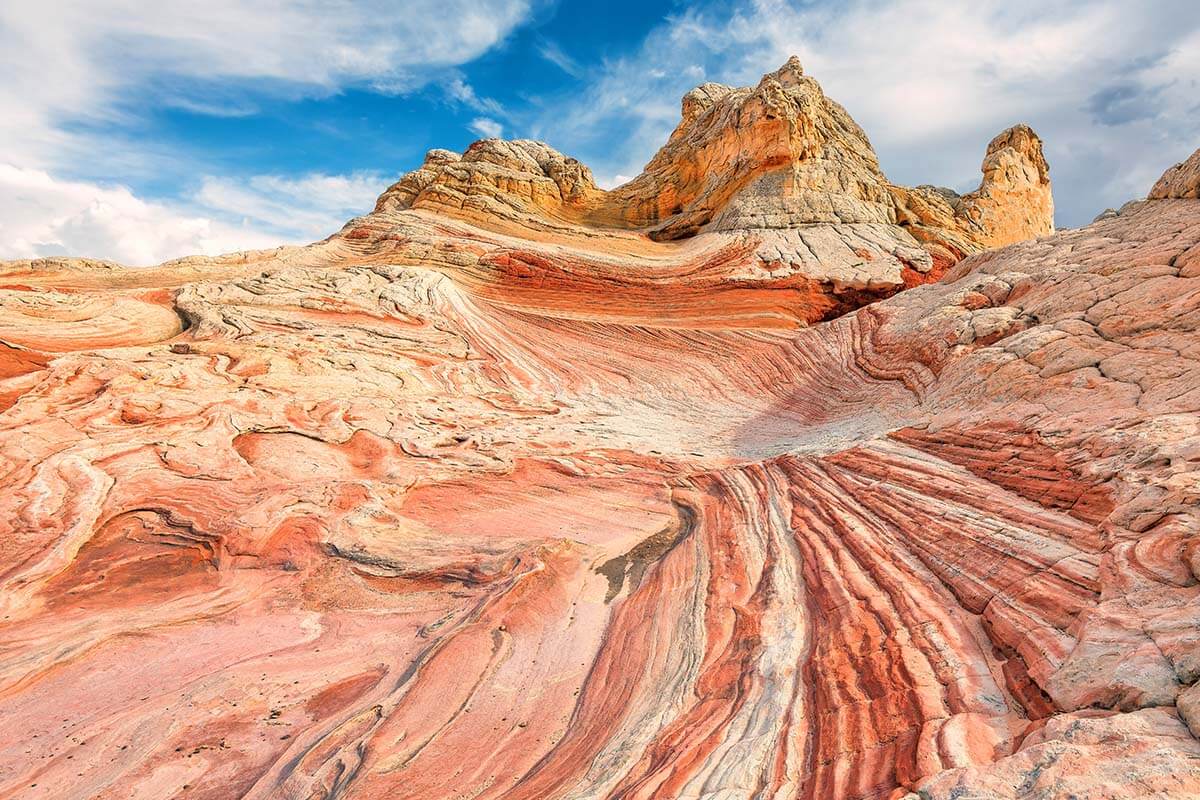

11. Page & Lake Powell
Lake Powellis a massive artificial lake on the Colorado River, situated in Northern Arizona and southern Utah. It lies close toPage, AZ(where you can explore iconic sites such as Antelope Canyon and Horseshoe Bend), the lake remains a premier travel destination in the region, drawing millions of visitors annually.
Page and the surrounding Lake Powell area offer plenty of activities and attractions for visitors. Vacationers can enjoy boat rentals, jet-skiing, flyboarding, or participating in guided lake tours. For those focused on sightseeing, beyond the water-based adventures, there are numerous scenic spots to explore.Antelope Canyon is a stunning slot canyon located in the American Southwest, renowned for its mesmerizing wave-like rock formations and vibrant light beams that shine through its narrow passageways. Carved by water and wind over millions of years, this natural wonder attracts photographers and tourists from around the world. The canyon is divided into two sections, Upper Antelope Canyon and Lower Antelope Canyon, each offering unique perspectives of its sculpted sandstone walls. Managed by the Navajo Nation, access to the site requires guided tours, ensuring preservation and respect for its cultural significance.andHorseshoe Bend is a breathtaking meander of the Colorado River located near Page, Arizona. The iconic curve, shaped like a horseshoe, is renowned for its stunning vistas and dramatic cliffs that tower over the river. Visitors often hike to the overlook for panoramic views of the vibrant blue waters contrasting against the surrounding red rock formations. A popular destination for photographers and nature enthusiasts, Horseshoe Bend offers a remarkable glimpse into the natural beauty of the American Southwest.You can effortlessly viewGlen Canyon Dam and Wahweap Overlook offers a stunning vantage point to take in the breathtaking scenery.This area features several picturesque trails worth exploring—don’t miss theHanging Gardens, a one-mile trek north of Page.
As previously noted in the Horseshoe Bend section, additional details can also be found regarding the same topic.incredible aerial adventuresIn this region, one of the top choices for value and quality is this well-reviewed small-plane tour. It offers breathtaking aerial perspectives of Horseshoe Bend, Lake Powell, and Glen Canyon.
How long to allocate.The amount of time needed varies based on your planned activities in the region. You can cover all the essential sights in half a day or a full day, but even a week-long stay won’t leave you feeling uninterested.
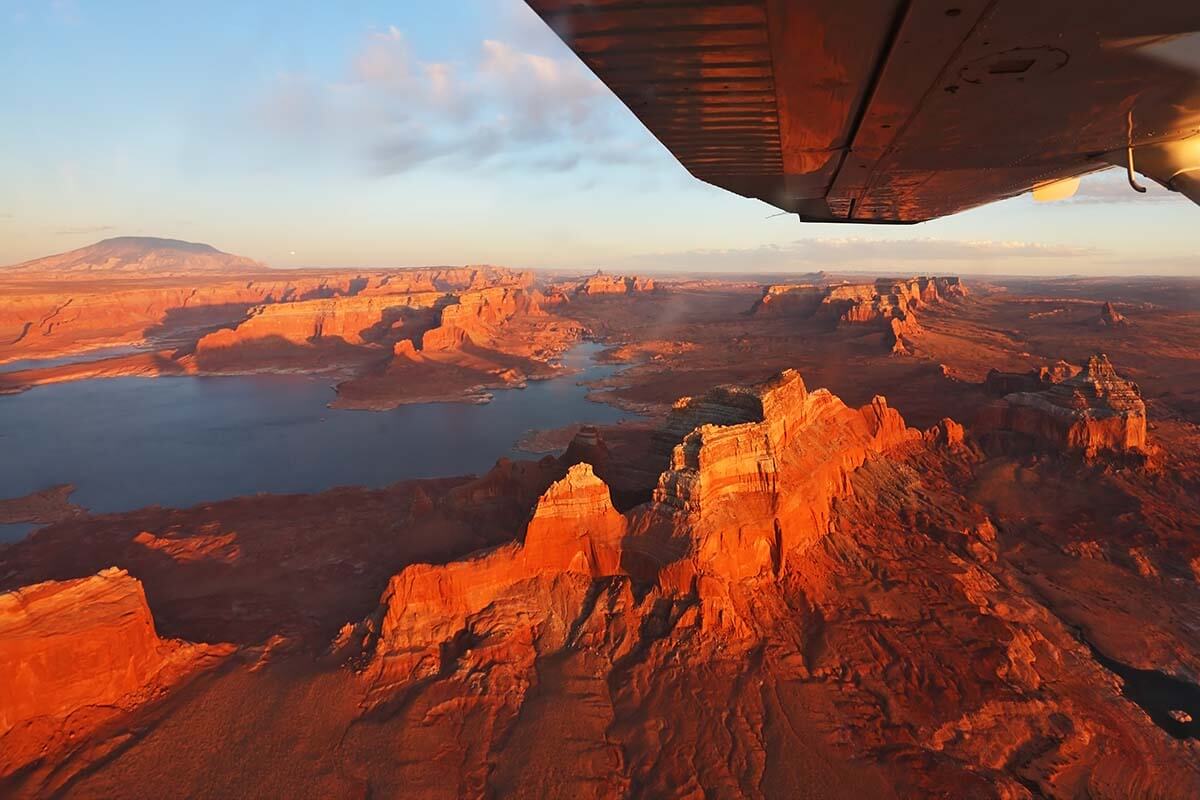
12. The Hoover Dam
Situated along the border between Arizona and Nevada,Hoover Dam stands as a monumental engineering achievement, harnessing the power of the Colorado River to provide water and hydroelectric power across the region. Its massive concrete structure and iconic arch design remain a testament to human ingenuity and perseverance.Hoover Dam stands as one of Arizona’s most iconic landmarks—and Nevada’s as well! A marker at the site clearly indicates the border between the two states. It offers a rare experience to be in both Nevada and Arizona simultaneously, making it a perfect spot for memorable photos. No visit to the region would be complete without including Hoover Dam, as it ranks among Arizona’s must-see attractions.
Hoover Dam is an extraordinary feat of engineering, and its immense size is sure to leave you in awe. Constructed nearly a century ago during the 1930s, it held the title of the world’s tallest dam at the time. The Visitor Center offers insights into its past, featuring detailed models and exhibits, as well as additional opportunities to explore.
Yet, the majority of visitors don’t enter the interior and instead take in the sights of the dam and its landscape from different vantage points. Ultimately, it comes down to the amount of time available and the other nearby attractions on your itinerary.
TIP:During a brief trip, be sure to catch the stunning vista from the Mike O’Callaghan Memorial Bridge. It’s the perfect spot to appreciate the dam’s massive scale. Don’t forget to explore the sights from the Hoover Dam as well—a walkway alongside the road offers great perspectives!
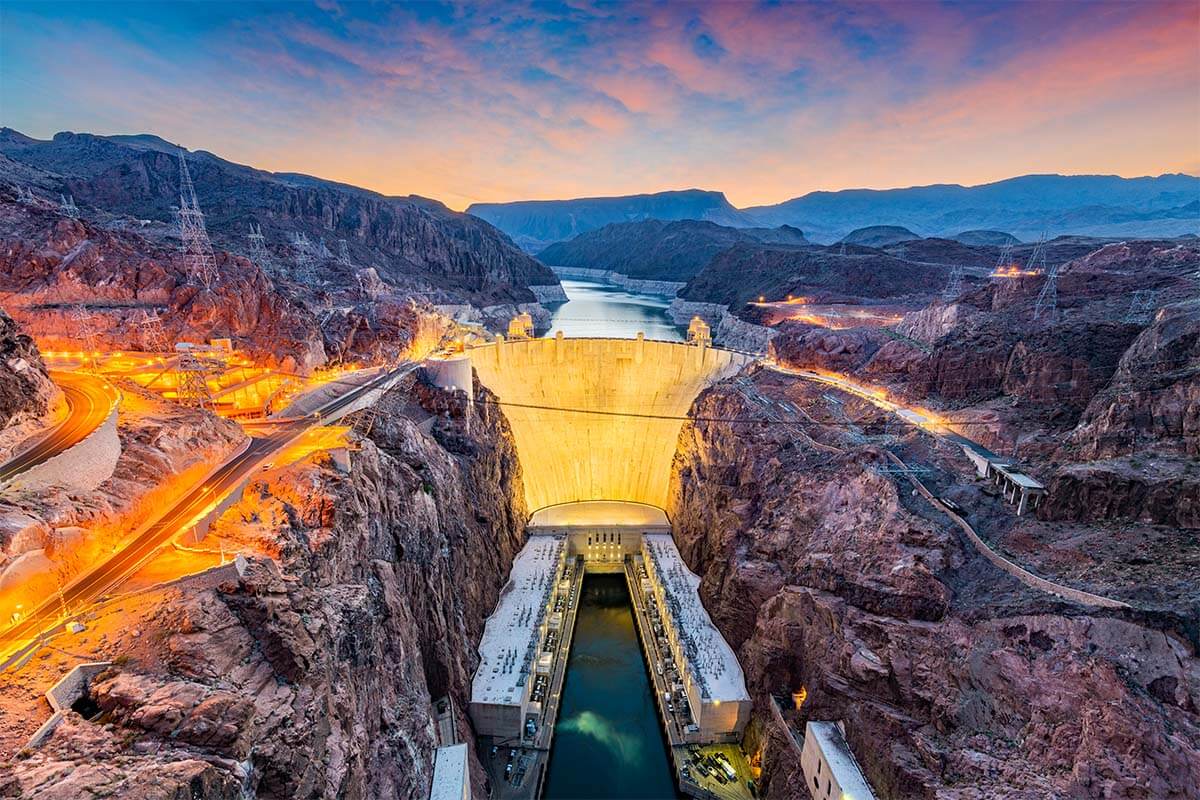
13. Saguaro National Park
The towering Saguaro cactus stands as the most iconic symbol of Arizona, and the finest spot to witness them is inSaguaro National Parknear Tucson. The park is home to almost two million Saguaro cacti!
Saguaro National Park is divided into two sections, located east and west of downtown Tucson. Visitors can explore Saguaro NP for as little as half a day or up to two full days.
If you’re short on time during your Arizona visit, you can experience the west section of Saguaro National Park (officially called the Tucson Mountain Division) on a quick day trip from Phoenix, since the journey takes roughly 90 minutes. However, to fully discover both sections of the park, it’s ideal to base yourself in Tucson and pair your visit with other top Arizona attractions highlighted in this guide.
Saguaro National Park is ideal for families with small kids or those who have mobility constraints, as both sections of the Park provide accessible experiences. Scenic loop drives allow visitors to explore breathtaking landscapes with ease. For shorter, gentle walks, the Valley View Overlook trail on the west side and the Cactus Forest Trail on the east side feature level paths that bring guests near diverse cacti varieties and present excellent chances to spot wildlife. Additional details about visiting Saguaro National Park can be found here.
TIP: To experience a breathtaking desert sunset, head to the western side in the late afternoon—the return segment of the loop drive offers a westward view as the sun dips behind the thick cactus groves. Since the park doesn’t have a set closing time, you can take your time (though the entire mountain range becomes very dark after sunset).
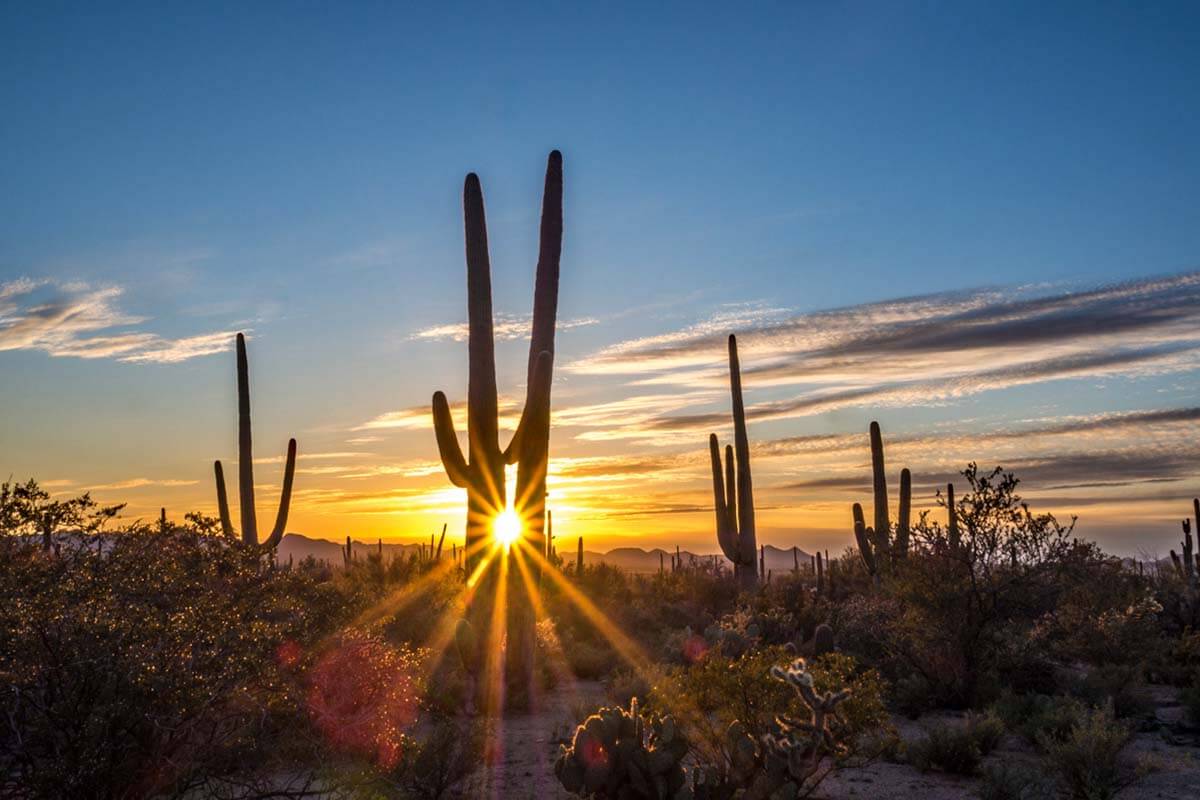
14. Montezuma Castle National Monument
Situated alongside the primary highway connecting Phoenix and Flagstaff, slightly to the south of Sedona,Montezuma Castle National Monument preserves a well-preserved cliff dwelling built by the Sinagua people. This ancient structure, nestled in a limestone alcove, showcases the ingenuity of its creators. The monument offers visitors a glimpse into the lives of those who inhabited the area centuries ago. Its remarkable preservation and historical significance make it a key cultural landmark.is a convenient destination to explore in Arizona. When you’re in the vicinity, make sure to stop and experience it!
Montezuma Castle stands as an ancient cliff dwelling, showcasing the architectural ingenuity of its original inhabitants. This well-preserved structure offers a glimpse into the past, reflecting the history and culture of those who built it centuries ago.The cliff dwelling, constructed by the Sinagua people in the 12th century, is an expansive site. Its primary structure rises five stories high and contains twenty rooms. Truthfully, it resembles a massive apartment complex more than a castle. Despite this, the dwelling remains remarkable and definitely merits a visit.
Entry to the interior is restricted, but you can still appreciate this remarkable formation by strolling along the brief paved path encircling it. This family-friendly site offers a pleasant experience and requires just 15 to 30 minutes to explore. While Montezuma Castle National Monument isn’t a standalone destination, it makes for a worthwhile pause if you’re in the area.
With additional time available, you might also exploreMontezuma Well is a natural limestone sinkhole located in Arizona. Formed by the collapse of an underground cavern, it is a unique geological feature with a constant water supply. The site holds cultural significance for the Sinagua people, who inhabited the area centuries ago. Today, it is part of Montezuma Castle National Monument and attracts visitors for its historical and ecological importance.This archaeological site is located roughly 10 miles from Montezuma Castle, a short 20-minute drive slightly away from the main road. However, because you can rejoin the primary highway from this point, it doesn’t add much of a diversion to your route.
Helpful information:The Visitor Center operates every day from 8:00 AM until 5:00 PM, with closures on Christmas and New Year’s Day. Admission costs $10 for adults, which may seem high, but children aged 15 and younger enter for free, and the ticket grants access to both locations. Visitors holding an annual America the Beautiful Pass (National Parks pass) can use it here as well.
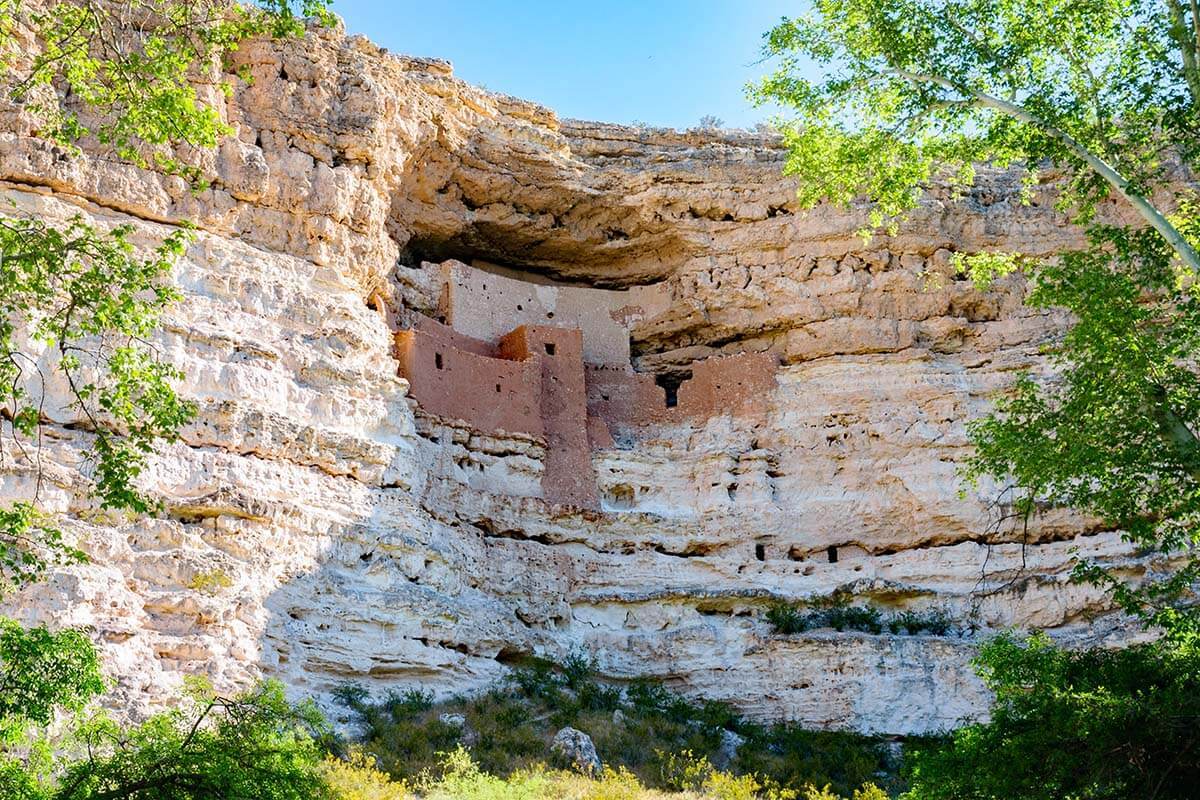
15. Tombstone
Exploring the “Old West” offers countless historical sites, ghost towns, and attractions, making it challenging to decide which ones truly deserve your time and investment. A trip toTombstoneIn southern Arizona, Tombstone, AZ, is guaranteed to be a crowd-pleaser. Those seeking an adventurous glimpse of the Wild West will undoubtedly discover it here. For many, this town stands out as an essential stop on any Arizona itinerary!
The entire community has dedicated itself to reviving the atmosphere and historical essence of the O.K. Corral gunfight and the events surrounding it.the wistful longing for the bygone era of the American Old West.
Strolling along E. Allen Street, a sunbaked dirt path in the heart of town, is an adventure all its own. Gunslingers nod politely as they pass under the scorching sun, while the horse-drawn carriage clatters away from the historic Wells Fargo Stagecoach station. Without warning, townsfolk dart behind barrels and peer cautiously over saloon doors. A lone gunman strides down the center of the road, pistols drawn, eager for a showdown… The outcome is never in doubt. It might be over-the-top, but it’s wildly entertaining and meticulously brought to life.
Of course, Tombstone has plenty more to explore! After the sheriff deals with the outlaw, head underground to tour the silver mine or uncover the truth behind the legendary shootout at the O.K. Corral. Dive deeper into the region’s past by visiting theThe Tombstone Courthouse History Museum showcases the rich heritage and historical significance of the area. Housed in the original courthouse building, the museum features exhibits and artifacts that highlight Tombstone’s past, including its role in the Wild West. Visitors can explore courtrooms, jail cells, and displays detailing notable events and figures from the region’s history. The museum offers a glimpse into the legal and social life of Tombstone during its heyday.Don’t miss the Tombstone Historical Trolley Tour—it’s the perfect way to stay updated on what’s happening in town.
How long to dedicate.Most visitors typically spend around 4-5 hours exploring Tombstone, making it an ideal day trip from Tucson or even Phoenix. But if you choose to extend your stay overnight, you’ll have the chance to enjoy additional evening entertainment. Options include joining a chilling ghost and murders tour around town or the family-oriented dead men’s tales ghost tour. Tombstone offers a variety of comfortable hotels, and spending the night will enhance your authentic Old West adventure.
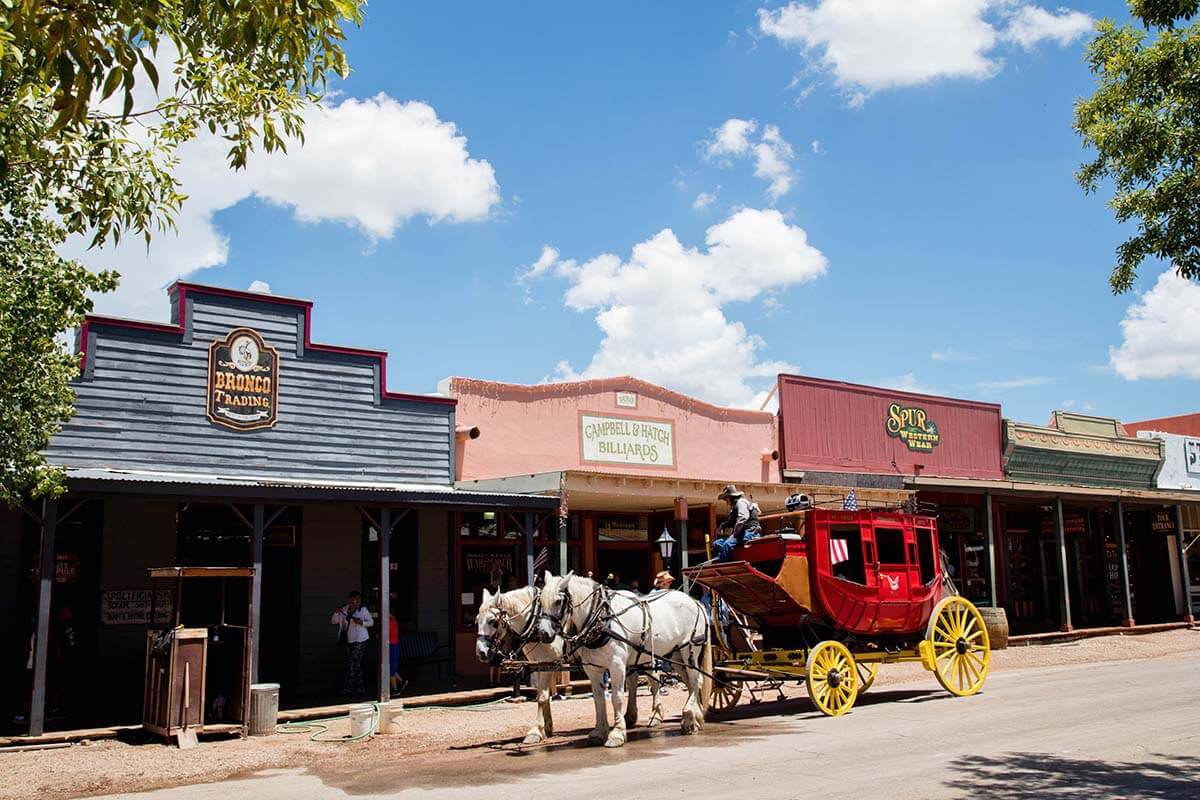
16. Canyon de Chelly National Monument
The Grand Canyon is undoubtedly Arizona’s most famous canyon, and for good reason. However, if you’re looking to explore beyond the usual tourist spots in the state,Canyon de Chellyis absolutely breathtaking and just as deserving of a visit. For those seeking to discover Arizona’s finest highlights, this hidden treasure is a must-see!
Canyon de Chelly National Monument sits in a secluded part of northeastern Arizona within Native American territory. Visitors can navigate the rim by car for convenient access to the breathtaking vistas of the canyon below. Utilize the numerous pullouts along the way and savor the landscape at a leisurely pace. The canyon showcases a striking blend of red, gold, and brown hues, contrasted by the vibrant greenery of its floor.
Just so you’re aware:Although some areas of the canyon can be explored independently, accessing most sections requires the assistance of a local guide. This is a valuable opportunity to gain insight into the region’s way of life and the tribe’s culture. Your guide will accompany you on a drive through the canyon, where you can also explore numerous hiking trails. For a list of recommended guides and tips for your trip, visit the visitor center or refer to the official website for additional details.
There are also several trails available for independent hiking. One of them takes you to theThe ruins of the White HouseIt’s truly amazing to witness. Alternatively, you can trek along theThe Overlook trail at Sliding HouseGazing up at a cliff dwelling perched high on the canyon wall is fascinating. Observing these varied forms of dwellings is truly captivating.
One of the most breathtaking sights in Canyon de Chelly is gazing across the expansive vista toward the toweringThe towering formation known as Spider RockIts vivid crimson stands out boldly against the mosaic of greenery, creating an unforgettable impression that lingers in your memory well beyond your time there.
TIP: Although a single day allows you to experience some of Canyon de Chelly’s highlights, staying for two or more days is ideal to fully appreciate this serene destination. It’s a true treasure that never fails to impress. Several hotels are available in Chinle, located right at the park’s entrance.
Endorsed by Arizona locals Sam at My Flying Leap.
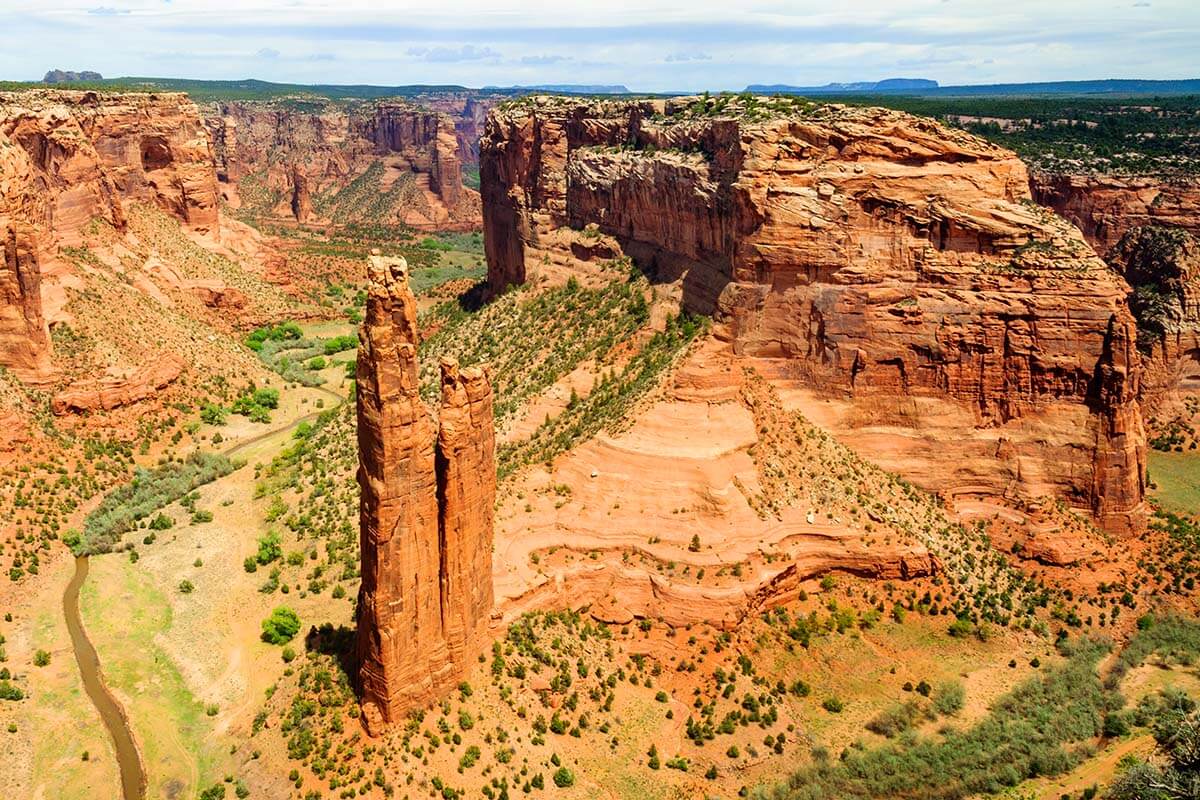
17. Flagstaff
If you’re searching for the top destinations to explore in Arizona,FlagstaffFlagstaff deserves a top spot on your itinerary! While it’s often overshadowed by Sedona and the Grand Canyon, the city offers plenty of fantastic activities that justify a visit during your Arizona adventure.
Flagstaff is most famous for lying along Arizona’s portion of Route 66.The iconic Route 66The legendary “Mother Road” runs straight through the center of downtown! For those who haven’t experienced Route 66, it’s a great opportunity to view the renowned sign and capture a picture with this emblematic slice of American history.
Flagstaff’s terrain stands apart from much of Arizona due to its lofty elevation. The city is perched at almost 7,000 feet above sea level, offering winter skiing opportunities just beyond its borders. Whenever you plan your trip, don’t forget to explore theSnowbowl’s Panoramic Chairlift Rideascending to the Arizona Snowbowl on Agassiz Peak, Arizona’s second-tallest summit reaching 12,356 feet. Another remarkable natural attraction lies close by.Sunset Crater Volcano National Monument, featuring its lava tubes and terrain shaped by volcanic activity.
Flagstaff is recognized as the first “International Dark Sky City” in the world—a title typically reserved for smaller towns and national parks. The city is home to its own observatory, the Lowell Observatory.Lowell ObservatoryThis is the site where Pluto was first discovered! Designated as a National Historic Landmark, the observatory offers tours that can be arranged by booking ahead of time.
Exploring Flagstaff’s vibrant brewery scene is another exciting activity. The city boasts several excellent breweries to visit.brewerieswhich are crafting innovative new beers and pairing them with tasty pub fare! Mother Road Brewing Company (inspired by Route 66) stands out as one of the top contenders. They focus on ales, including IPAs, double IPAs, tripels, brown ales, pale ales, and more—all of which are exceptional.
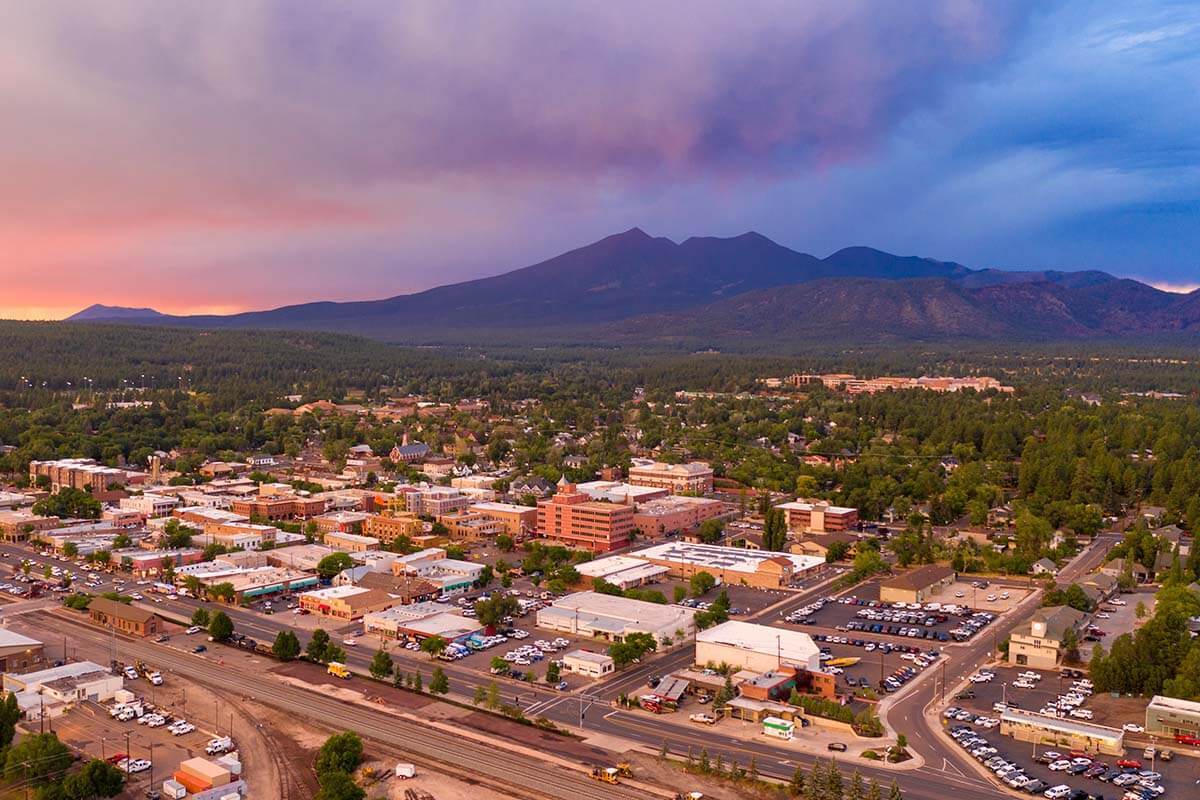
18. Williams & Bearizona Wildlife Park
Williams, Arizonamight not stand out as a top travel spot in Arizona, overshadowed by larger cities and the state’s stunning National and State Parks. However, overlooking it would be a mistake, as it offers plenty of captivating sights to explore!
Like numerous towns in this region, Williams sits directly along the renownedThe iconic Route 66, also known as the Mother Road, stretches across the United States, symbolizing freedom and adventure. This historic highway connects Chicago to Los Angeles, passing through diverse landscapes and small towns. Once a major path for migrants and travelers, Route 66 remains a cherished piece of American culture, celebrated for its nostalgia and enduring legacy.Along this stretch, you can explore numerous Route 66 landmarks, including historic structures, souvenir stores, and the Route 66 Gas Station Museum.
One of the top attractions you shouldn’t overlook in Williams is aa breathtaking train journey to the Grand CanyonTravel aboard the Grand Canyon Railway, departing from town in the morning. The journey takes approximately two hours, arriving at the South Rim within Grand Canyon National Park.
You can travel in glass dome cars and take in the stunning views, with several hours of free time to discover the South Rim. While extending your stay in the park is an option, many visitors opt for a day trip, taking the train back to Williams in the afternoon.

One of the essential attractions you shouldn’t miss in Williams isBearizona Wildlife Park offers visitors an immersive experience with North American wildlife in a natural setting. The park features drive-through and walk-through areas where guests can observe animals such as bears, wolves, and bison up close. Educational programs and interactive exhibits provide insights into conservation efforts and the behaviors of these species. Located in Williams, Arizona, Bearizona Wildlife Park is a popular destination for families and wildlife enthusiasts alike., a drive-through wildlife and safari park focused on showcasing the native animals of Arizona. What sets Bearizona apart is its design: rather than confining creatures to limited spaces, they roam freely while visitors explore their natural environments from the comfort of their cars.
This offers a chance to witness incredible wildlife up close, including bison, bear, and wolf. Imagine the thrill of a wolf strolling past your vehicle or two bears clashing just inches away, separated only by your car window—it’s an unforgettable adventure!
Bearizona features immersive ‘walk-through’ displays that allow visitors to view smaller creatures like beavers, porcupines, red foxes, and more. Beyond the exhibits, the park offers live animal demonstrations, with the birds of prey show being a crowd favorite. It’s an incredible destination in Arizona for all ages and a top recommendation for families!
Just so you’re aware:Bearizona operates every day of the year, without exception. Weekday visits are more affordable compared to weekends. Additional details can be found on their official website.
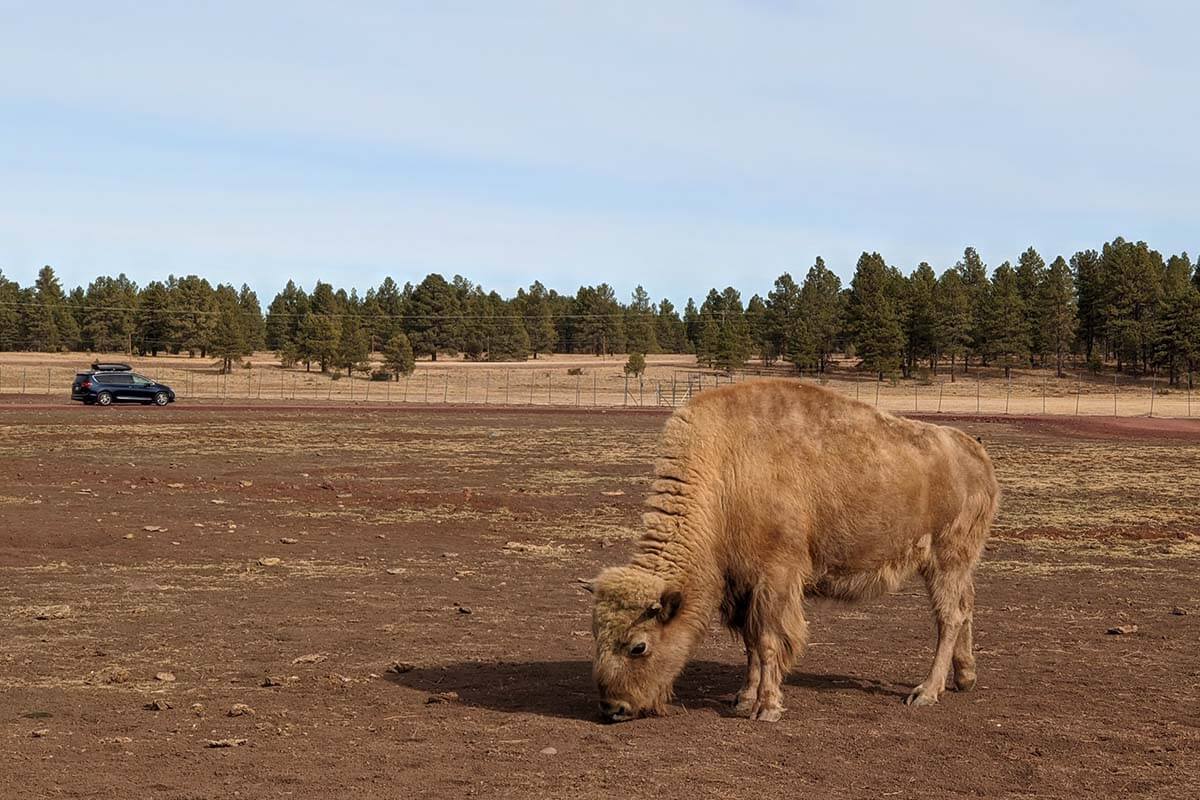
19. Sunset Crater Volcano and Wupatki National Monuments
Arizona offers two additional fascinating sites to explore – Sunset Crater Volcano National Monument and Wupatki National Monument. Situated close to Flagstaff, these landmarks can be visited quickly, making them perfect for adding to your Arizona road trip if you have a few extra hours in the region.
Sunset Crater Volcano National Monument preserves the remnants of a volcanic eruption that shaped the landscape centuries ago. The site offers visitors a glimpse into the dramatic geological forces that created its iconic cinder cone and lava flows. Managed by the National Park Service, the monument provides opportunities for hiking, education, and exploration of its unique volcanic features.revolves around an inactive cinder cone volcano that last erupted approximately 1,000 years ago (1025 AD). Unquestionably, encountering a volcano in Arizona is an unexpected and remarkable sight!
The The path known as Lava Flow TrailThis trail stands out as a top hiking choice, guiding visitors across the Bonito Lava Flow and past various volcanic formations at the foot of Sunset Crater Volcano. The route is a simple 1 mi (1.6 km) loop, offering glimpses of a lava tube and other volcanic remnants. A visit to the Visitor Center enhances the experience with extra details and access to the Junior Rangers program.

Sunset Crater Volcano National Monument links withWupatki National Monument preserves the remnants of ancient Puebloan villages, showcasing the rich cultural heritage of the region. The site features well-preserved ruins that offer a glimpse into the lives of the people who once inhabited the area. Visitors can explore the historic structures and learn about the history and traditions of the indigenous communities. The monument stands as a testament to the resilience and ingenuity of its original inhabitants.approximately 10 miles distant via Loop Road.
Over seven centuries ago, Wupatiki stood as the most prominent, expansive, and powerful pueblo in the region. It was home to approximately 85-100 residents, with several thousand others living within a day’s journey.
Several short hiking trails are available near the pueblo sites. The Visitor Center provides details about the area’s history and features a Junior Rangers program, along with additional resources.
TIP: Plan your park visits for early morning or late afternoon since shade is scarce. Arriving at dawn increases your chances of seeing pronghorns grazing in the fields close to the Wupatki National Monument entrance.
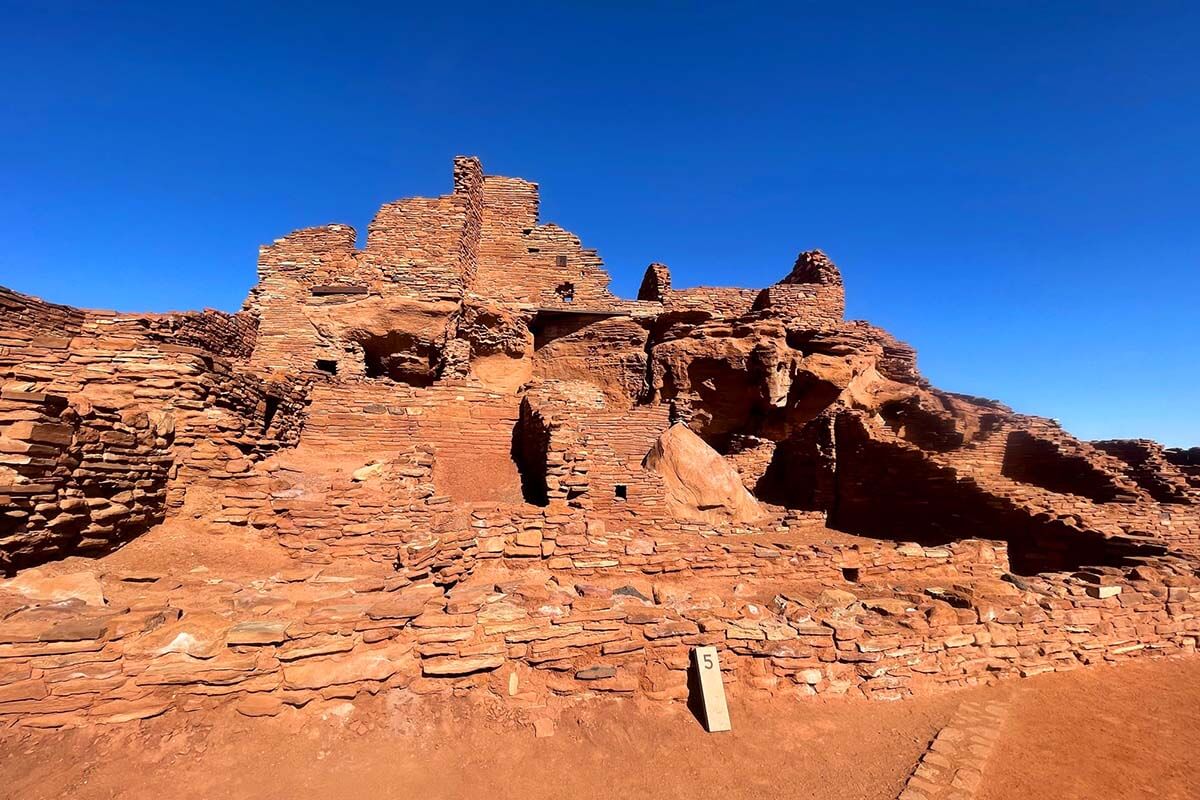
20. Petrified Forest National Park
The Petrified Forest National Park preserves one of the largest and most vibrant concentrations of petrified wood in the world. The park, located in northeastern Arizona, showcases stunning landscapes filled with fossilized trees that date back over 200 million years. Visitors can explore colorful badlands, ancient petroglyphs, and remnants of prehistoric ecosystems. The park also protects significant archaeological sites and offers a glimpse into the region’s natural and cultural history. With its unique geological formations and rich paleontological resources, Petrified Forest National Park provides an extraordinary window into Earth’s distant past.Nestled between two key highways – Hwy 40 and Hwy 180 – in eastern Arizona lies a remarkable destination for outdoor enthusiasts and adventure seekers. This park stands out from all other locations in Arizona, featuring vibrant, one-of-a-kind scenery, ancient petrified tree trunks dating back 200 million years, along with fossils and petroglyphs.
Make sure to explore theRainbow Forest Museum showcases an array of exhibits that highlight the natural and cultural history of the region. Visitors can explore displays featuring fossils, minerals, and artifacts from local Indigenous communities. The museum also offers educational programs and guided tours to enhance the visitor experience. Its mission is to preserve and share the rich heritage of the area while fostering a deeper appreciation for its unique environment.located just off Highway 180 for convenient access. Though compact, the museum offers a wealth of information, covering everything about the region’s natural history. Petrified Forest National Park is another must-visit spot, ideal for hiking and adventure. TheBlue Mesa Loop PathThis trail is strongly recommended because it offers some of the most breathtaking views in the park, and the loop spans just 1 mile (1.6 km).Painted Desert Rim Trail offers a scenic hike along the edge of the colorful badlands, showcasing breathtaking views of the vibrant landscape. The trail winds through rugged terrain, providing an immersive experience in the unique geological formations of the region. Visitors can enjoy the striking contrast between the desert’s hues and the vast open skies.offers another enjoyable and brief trek of comparable distance.
Exploring the park in a single day is entirely feasible, with options to drive to key attractions or take a few brief hikes. Due to limited lodging in the area, many visitors only spend a few hours or a day here. For a deeper appreciation of the park’s beauty, consider extending your stay to two or three nights—there’s no shortage of sights and activities to fill your time.
Helpful to note:Campsites can only be reached by hiking, and RV camping is not allowed. A free permit from the Rainbow Forest Museum is required for camping. This experience is tailored for seasoned hikers and campers seeking adventure. For those preferring accommodations, Holbrook, AZ, is the closest town, offering hotels, restaurants, and shops. It’s approximately 20 miles or a 25-minute drive from either park entrance. The entry fee is $25 per vehicle, or an annual national parks pass can be used instead.
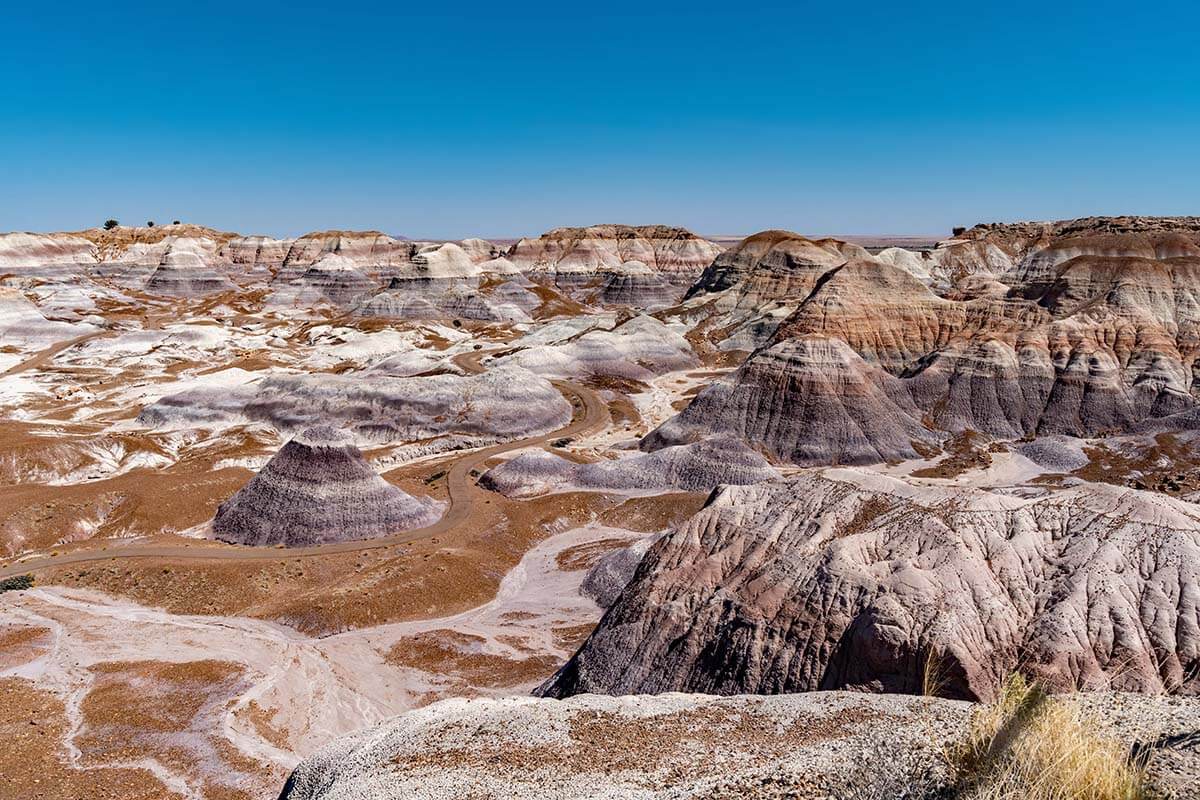
21. Navajo National Monument
Navajo National Monument preserves three well-preserved cliff dwellings of the Ancestral Puebloans: Betatakin, Keet Seel, and Inscription House. These sites offer a glimpse into the lives of the Ancestral Pueblo people who lived in the region over 700 years ago. The monument is located within the Navajo Nation in northern Arizona and is managed by the National Park Service. Visitors can explore the area through guided hikes and learn about the rich cultural history of the Ancestral Puebloans and the Navajo people. The stunning landscape, with its deep canyons and towering cliffs, adds to the monument’s significance and beauty.features three of Arizona’s most impeccably maintained cliff dwellings. Whether you have an hour, a morning, or multiple days to explore, the site offers something for every schedule. Regardless of your available time, a visit is undoubtedly rewarding!
The simplest and most favored method to explore the monument is by taking the self-guided hiking trail.Sandal PathThe 1.3-mile paved trail, which follows an out-and-back route, winds through pine and juniper groves before reaching a scenic overlook. From this vantage point, visitors can admire the Betatakin cliff dwelling, situated 0.25 miles across the canyon. Completing the hike typically takes one to two hours, allowing time to appreciate the view of the ancient structure.
If you have additional time, you can opt for a backcountry hike to view the dwellings closely. Guided hikes or tours are available to exploreBetatakinThe tours usually last between 3 and 5 hours. Participants can choose between a challenging 3-mile or 5-mile uphill hike, followed by time spent at the dwelling. These tours are available twice daily from mid-May through mid-September. Same-day registration is possible at the Visitor Center. Additional details can be found at .
For those seeking greater adventure (and in better shape), a challenging 17-mile roundtrip backcountry self-guided hike to the is also available.The Keet Siel cliff dwellingThe hike can be completed in a single day or with an overnight camping stay. To hike Keet Siel, a reservation is required, followed by a compulsory orientation session held the afternoon prior to your scheduled hike.
TIP: You can hike Betatakin in the morning, attend the Keet Siel orientation upon your return, and then hike to Keet Siel the following day. This allows you to explore both cliff dwellings within two days (or three if you choose overnight camping). A campground is available near the Visitor Center, along with several hotels in Kayenta, roughly a 30-minute drive away.

22. Lower Salt River and Its Wild Horse Herds
Meandering across the dry expanse of the Tonto National Forest, theThe Lower Salt RiverAn outdoor lover’s paradise, this stunning Sonoran Desert retreat is best discovered by boat. Glide past rugged, crimson cliffs while taking in breathtaking vistas of cactus-studded terrain.
You don’t need to be a seasoned kayaker or paddler to appreciate this peaceful river. However, if you can navigate your watercraft, you’ll have a better chance to see the main attraction here—the wild mustangs. Small groups ofuntamed mustangsHorses can often be seen approaching the water to drink. With some luck, you might even catch a glimpse of a group of them wading across the river.
The Salt River stretches 200 miles in total, yet the Lower Salt River is the favored stretch for or . Its close distance to Phoenix makes it a convenient day excursion for those visiting the metropolitan region, with the majority of tours originating in Mesa, AZ.
For the best experience, go . Local outfitters supply all the necessary gear (such as a wet bag to protect your items from water), offer guidance, and enhance the trip with expert guides who highlight local wildlife and share engaging tales. While you can rent equipment and paddle without a guide, you’ll have to organize your own transportation and obtain a Tonto National Forest Recreational Pass. Booking a tour typically handles these details for you.
Just so you’re aware:Wear layered clothing, as mornings are cooler but temperatures rise fast. Be prepared to get wet—it’s typical to pause in the river’s shallow spots to cool off in the water.
TIP: For those seeking more excitement and thrills, additional rafting adventures are available on a different section of the Salt River. These trips typically launch from Whiteriver, AZ. You can reserve a spot here or opt for an extended 6-hour rafting experience. Many of these excursions remain suitable for beginners, with children (generally ages 8 and up) welcome to join.
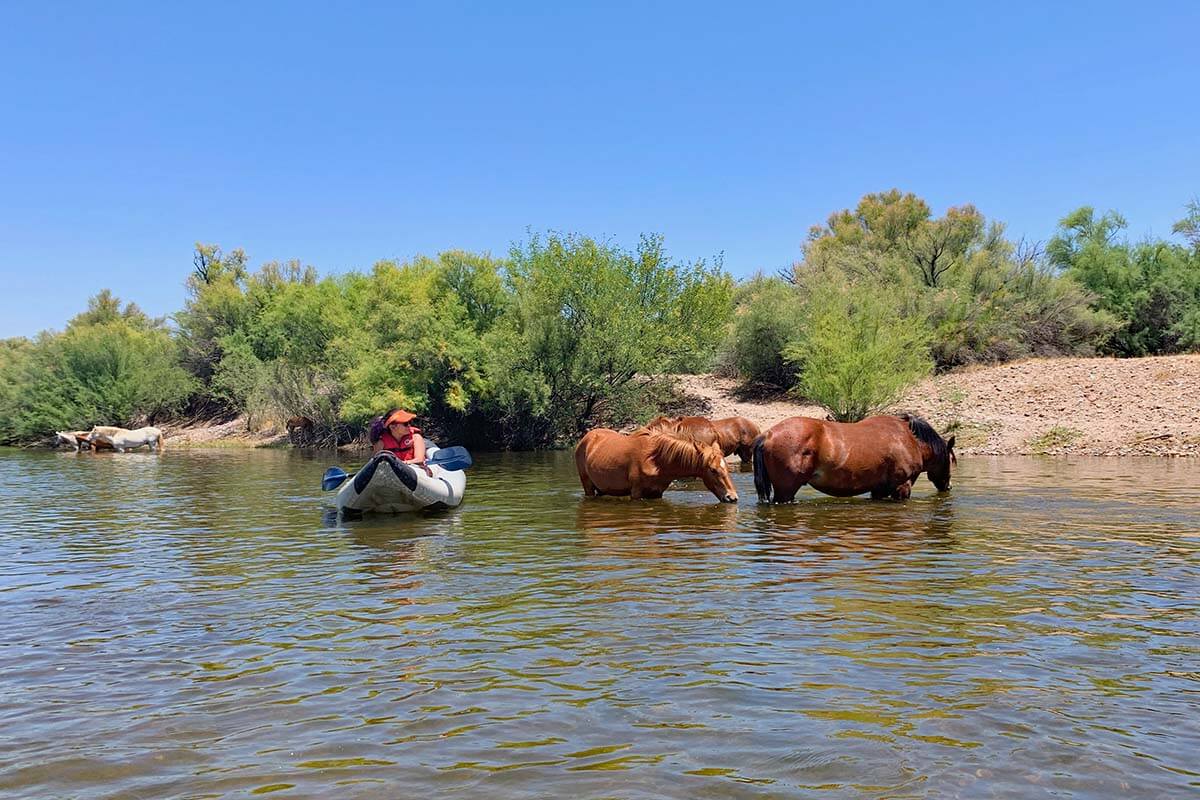
23. Apache Trail
If you’re exploring the Phoenix region, one of the standout spots that truly captures the spirit of Arizona and the rugged Wild West is theThe historic Apache Trail winds through the rugged desert landscape, offering breathtaking views and a glimpse into Arizona’s storied past. This scenic route, known for its twists and turns, takes travelers past towering cliffs, serene lakes, and remnants of ancient settlements. A journey along the Apache Trail is both an adventure and a step back in time, showcasing the natural beauty and rich history of the region.situated approximately 20 miles from the city.
The Apache Trail offers a genuine glimpse into Phoenix’s historic past and the spirit of the Old West. This route connects many of the water reservoirs that supply much of the region, yet it also winds through dry desert landscapes dotted with native cacti, ghost towns, and small, quirky communities. These spots feature laid-back dive bars adorned with vintage memorabilia on walls and ceilings. Truly a unique destination in Arizona, the Apache Trail retains its untouched, classic Western charm.
The Apache Trail spans roughly 40 miles, offering numerous scenic overlooks and fantastic chances for photography. It’s a one-of-a-kind experience, perfect for adventure. Much of the route consists of unpaved dirt and gravel roads, meandering paths that follow the water’s edge and climb into rolling hills, revealing breathtaking vistas of the spectacular landscape.
A well-known destination along the Apache Trail route isGoldfield ghost towna historic mining town that retains its genuine charm while catering to visitors, without feeling overly commercialized.Superstition Mountainand theLost Dutchman State Park offers stunning desert landscapes and rugged mountain terrain, named after the legendary Lost Dutchman’s Gold Mine. Visitors can enjoy hiking trails, wildlife viewing, and picturesque sunsets against the iconic Superstition Mountains. The park provides camping facilities and picnic areas, making it a perfect destination for outdoor enthusiasts. Its rich history and natural beauty attract adventurers and nature lovers alike.The stunning mountain and outcrop formations offer incredible hiking opportunities to explore.
Canyon Lakeoffers a pleasant break with excellent amenities for picnicking, aquatic activities, and various water-based recreation.Tortilla Flat remains a vibrant and distinctive locale, retaining its original charm and character. The area continues to embody its unique spirit, unchanged in its essence and appeal.Along the way, another essential stop is the historic western settlement. This quirky spot features a charming old general store, a lively bar, and several intriguing outbuildings to discover. It offers an enjoyable experience, perfectly capturing the essence of a classic outpost in this region.
Traveling the Apache Trail’s forty miles of diverse landscapes is far from a quick trip. Plan for a minimum of 3-4 hours, though you could easily spend a full day exploring this path. When visiting Phoenix, set aside time to experience the Apache Trail for a glimpse of Arizona’s Wild West heritage.
Suggested by Noel Morata of Travel Photo Discovery.
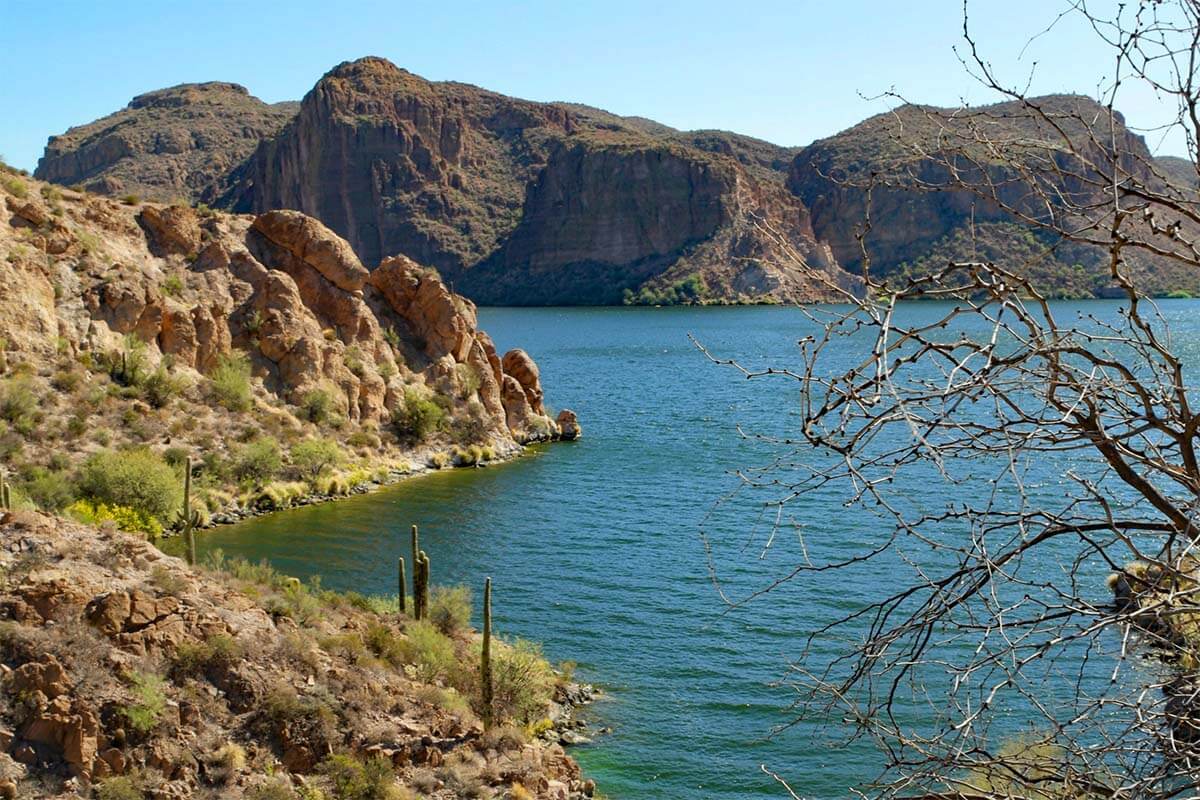
24. Lake Havasu
Although Lake Havasu might not be widely known, it hosts Arizona’s second most popular destination, the globally renownedLondon Bridge stands as an iconic structure, connecting the bustling districts of London across the River Thames. Its enduring presence has made it a symbol of the city’s rich history and architectural heritage.Certainly! Here’s the rewritten version while preserving the original meaning and context:
! Absolutely,theThe iconic London Bridge from England, UK, famously referenced in the nursery rhyme “London Bridge is Falling Down,” was acquired in 1968. It was carefully dismantled and transported brick by brick from its original location along the River Thames to Lake Havasu, where it now connects the city to an island in the Colorado River.
A persistent rumor suggests that the founder of Lake Havasu City believed he was buying the far more ornate Tower Bridge, only to discover they had acquired the simpler brick structure of London Bridge instead.
Beyond discovering a slightly unusual historic landmark, Lake Havasu offers countless other attractions worth exploring. Fromexploring the trails of SARA Park on foot or by mountain bike to fishing, boating, andpaddleboardingby the lakeside or unwinding on its sandy shoresbeachesNestled in the Sonoran Desert, this city by the lake truly offers something to suit every traveler’s ideal getaway.
One of the most spectacular sights is the Lake Havasu Hot Air Balloon Festival, where over 80 colorful balloons fill the sky above the lake during a weekend in mid-January, creating a breathtaking scene. Bring your family to experience live music, delicious food, fun entertainment, and exciting carnival rides, making it the perfect time to explore Lake Havasu.
TIP: Though a day trip to Lake Havasu is possible, it truly shines as a getaway spot when you stay longer. Plan for a minimum of three days to unwind and explore everything Lake Havasu has to offer. To fully soak up the summer vacation vibe, book a lakeside Airbnb with your closest friends or family for an unforgettable group retreat.
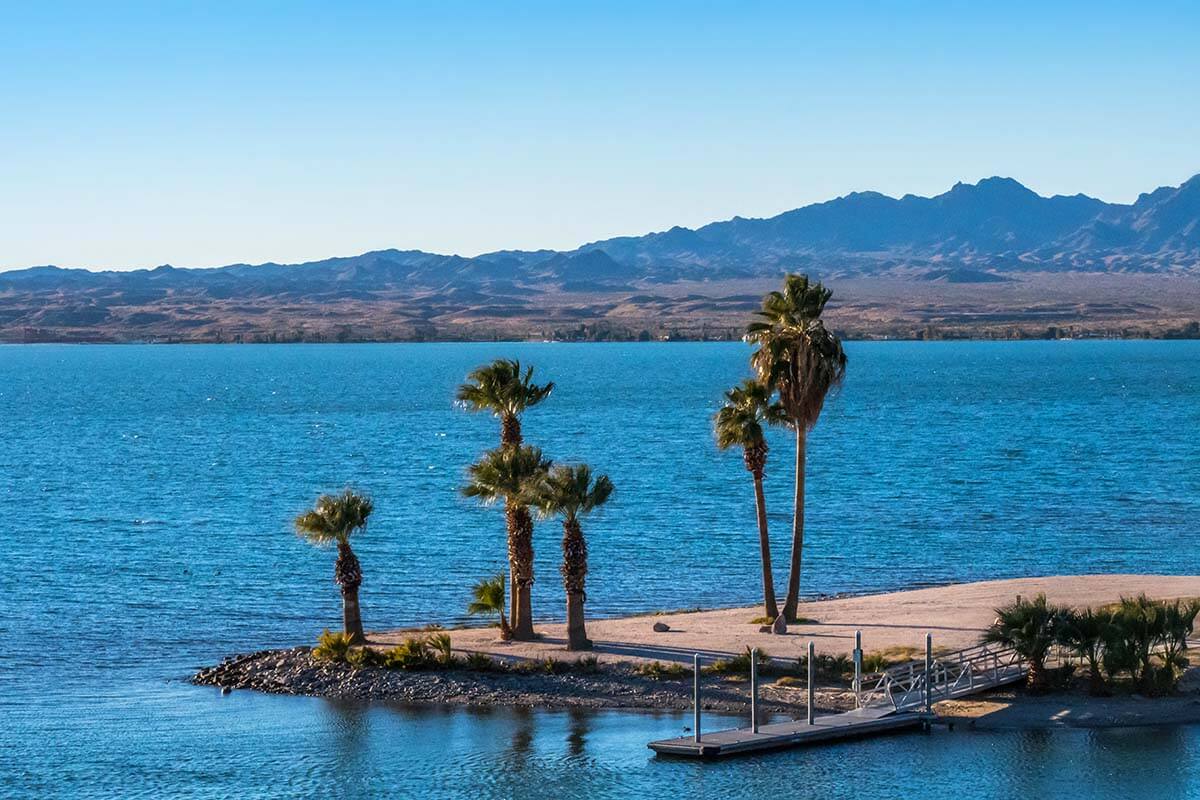
25. Oatman
If you’re searching for beautiful destinations to explore along the famousRoute 66 stretches through Arizona, offering a historic journey across the state’s iconic landscapes.Explore the charming small village ofOatmanLocated between Needles and Kingman, Oatman was established in 1915 after two individuals discovered gold in the region, valued at more than $10 million. In just one year, the town’s population surged to 3,500 residents. Yet, when the mines shut down and Interstate 40 was constructed, Oatman became a ghost town.
Today, Oatman is a favored destination for travelers exploring the Southwest USA by car, with a population of roughly 40-50 residents. Alongside the stunning stretch of historic Route 66 that runs between Oatman and Kingman, the town offers plenty of other attractions worth visiting.
The initial impression upon arrival is the abundance ofwild donkeysThe burros that roam the streets are the offspring of the pack mules once used by prospectors in the past. These animals are safeguarded by authorities and allowed to wander without restriction. Visitors can purchase treats from local stores to feed them.
Also, theOatman HotelIt’s definitely worth a visit. Clark Gable and Carole Lombard, the iconic duo from *Gone with the Wind*, spent their honeymoon here in 1939. Additionally, the hotel has a reputation for being haunted. But there’s no need to fret—”Oatie the Ghost” appears to be quite friendly.
If you’re traveling in the area, make a quick detour from the main highway, explore a section of the original Route 66, and stop by Oatman. It’s a brief visit that won’t take more than an hour or two, but it’s sure to add something unique to your Arizona road trip.
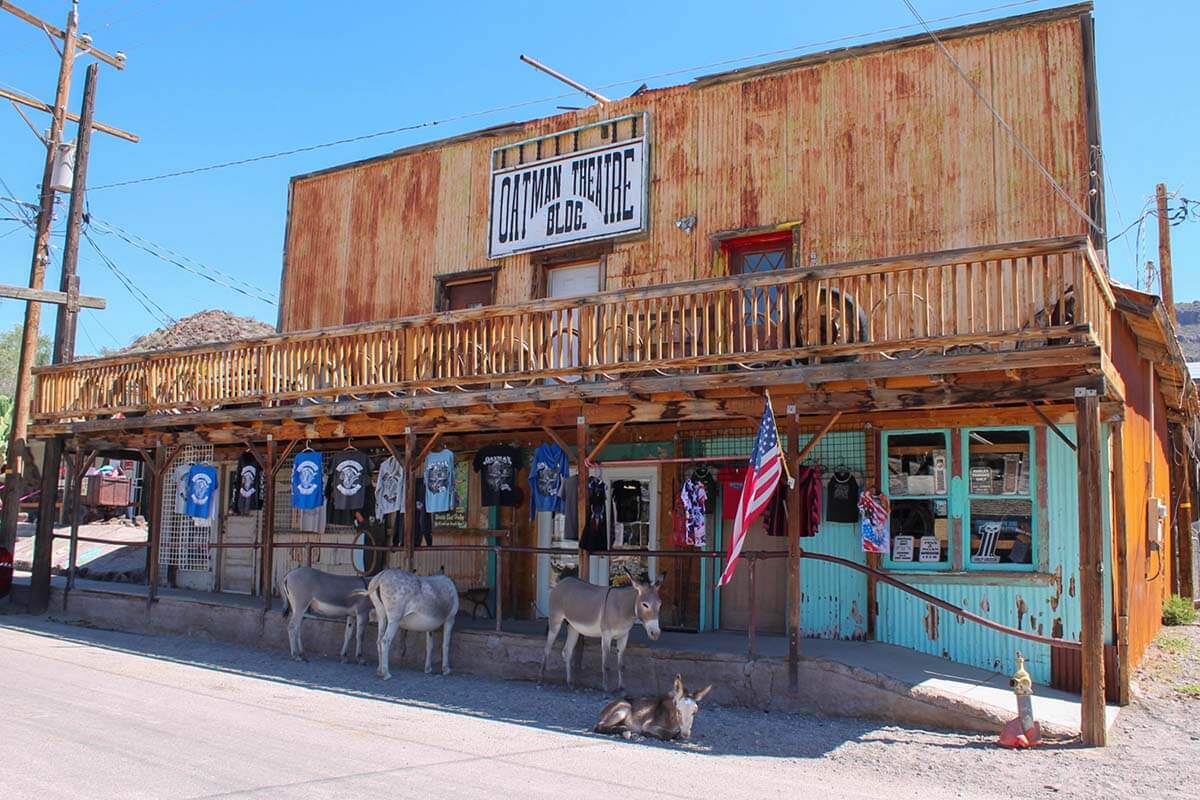
26. Seligman, Historic Route 66
SeligmanOne additional location we believe warrants special recognition among Arizona’s top destinations is the . Often regarded as the“Where Historic Route 66 Began”Seligman is a charming town located on the historic Route 66, offering a glimpse into the past and preserving the essence of what the iconic highway once represented.
Seligman is a vibrant town that has maintained much of its historic architecture and traditions, offering plenty of charming spots for memorable photographs.
One of the top locations to begin is theCopper Cart, a former gas station repurposed as a gift shop. A genuine cowboy, dressed in full gear with horses, classic cowboy hats, and 1870s Winchester rifles, frequently spends time here, offering fantastic photo opportunities with all the authentic props. Remember to leave a tip, as the contributions help cover the cost of hay for the horses.Historic Seligman Sundriesoffers another great spot to pick up keepsakes and capture memorable pictures.
Seligman offers countless fantastic chances for photography (make sure to capture the vibrantThe Seligman indicationYou can easily spend an hour or two exploring and capturing photos. A few charming old-school spots are perfect for lunch or a quick bite—consider Delgadillo’s Snow Cap or Westside Lilo’s Cafe.
Similar to many Route 66 stops, Seligman isn’t a primary destination but makes for a perfect spot to snap photos or grab a meal while traveling through. When you’re close to Williams, AZ, or making the trip between Las Vegas and the Grand Canyon, it’s worth a visit. With extra time, you can even explore a stretch of the iconic Route 66 in this area.
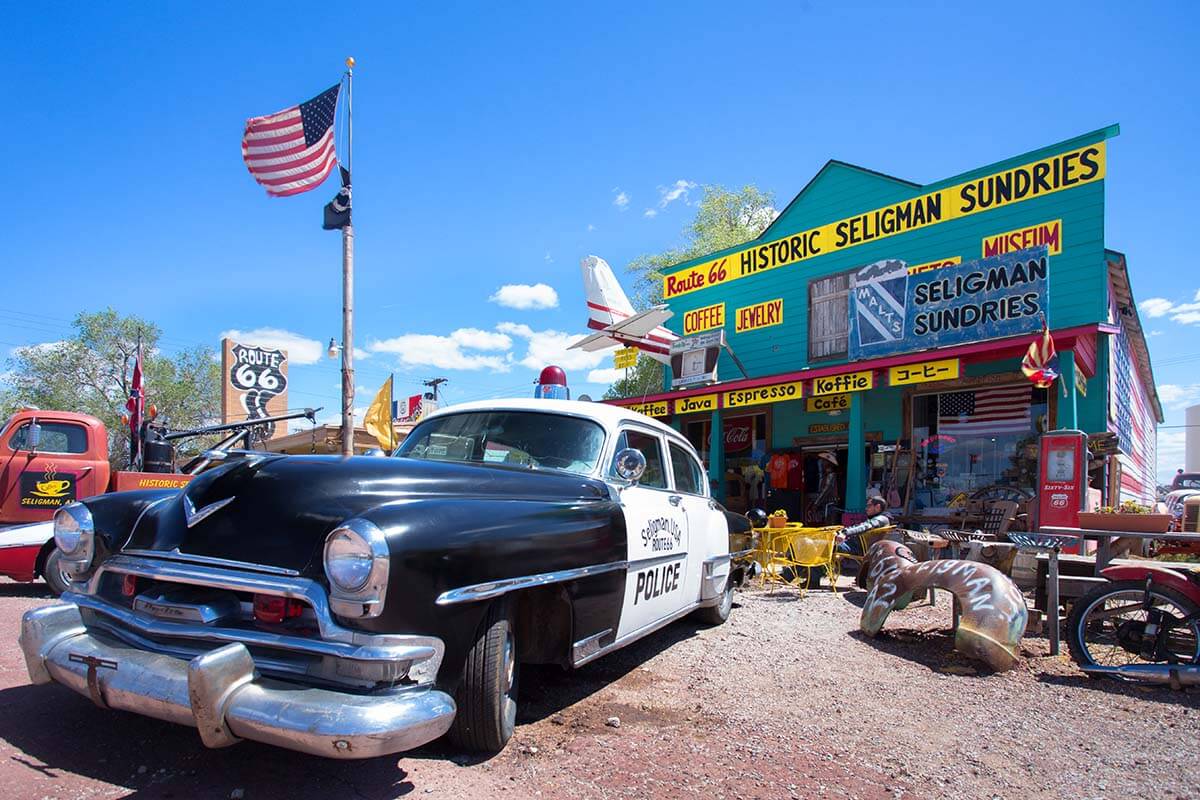
Best Locations to Explore in Arizona
To help you visualize the locations of these spots, we’ve prepared a map highlighting the key landmarks and attractions discussed in this article (shown below). This will make it easier to identify which sites can be combined, allowing you to design an ideal Arizona travel plan that includes all the destinations you’re most excited to explore.
How to navigate with this map:Zoom in or out using your computer mouse or touchscreen. Select the icons to access details about specific locations. For the index, click the arrow in the top-left corner. To save the map to your Google Maps account, tap the star beside the map’s title. Access the saved map on your smartphone or computer by opening Google Maps, selecting the menu, and navigating to ‘Your Places’ or ‘Maps’. For printing or viewing in a larger window, choose ‘View larger map’ in the top-right corner.
Here’s your guide to some of the top spots in the Grand Canyon state. We hope it sparks inspiration for your next adventure and helps you discover the best of Arizona!
Discover additional travel ideas for this region by exploring our highlighted articles listed below. Take a look!
- A single day spent exploring the Grand Canyon
- Best places to stay when visiting Grand Canyon
- Grand Canyon – Antelope Canyon – Horseshoe Bend travel plan
- Top activities to experience in Sedona
- Exploring Sedona in a single day
- Zion to Bryce Canyon – essential travel details and recommended itinerary ideas
- Top hiking trails to explore in Zion National Park
- Best places to stay in and around Zion National Park
- Top activities to experience in Arches National Park
- Top activities to experience in Canyonlands National Park
- Top activities to experience in Moab
- Best places to stay in Moab
- Top Moab Tour Experiences
- Top activities to experience in Las Vegas
- Essential tips and advice for first-time visitors to Las Vegas
- Morning: Start your day with breakfast at a popular café on the Strip. Then, explore iconic landmarks like the Bellagio Fountains and the High Roller.
Afternoon: Enjoy lunch at a renowned buffet before visiting themed casinos such as The Venetian or Caesars Palace. Spend some time shopping at the Grand Bazaar Shops.
Evening: Dine at a celebrity chef restaurant, then catch a world-class show or experience the vibrant nightlife at a top-tier nightclub. End the night with a stroll along the illuminated Strip.
- Top day excursions from Las Vegas
- 3-Day Travel Plan for Los Angeles
- Universal Studios Hollywood: Essential Advice for First-Time Visitors
- Universal Studios Hollywood compared to Warner Bros. Studios Hollywood
- San Diego Travel Plan
- Top Destinations to Explore in Death Valley National Park
Found this post useful? Remember to save it and pass it along to others. Using Pinterest? Go ahead and pin these visuals!
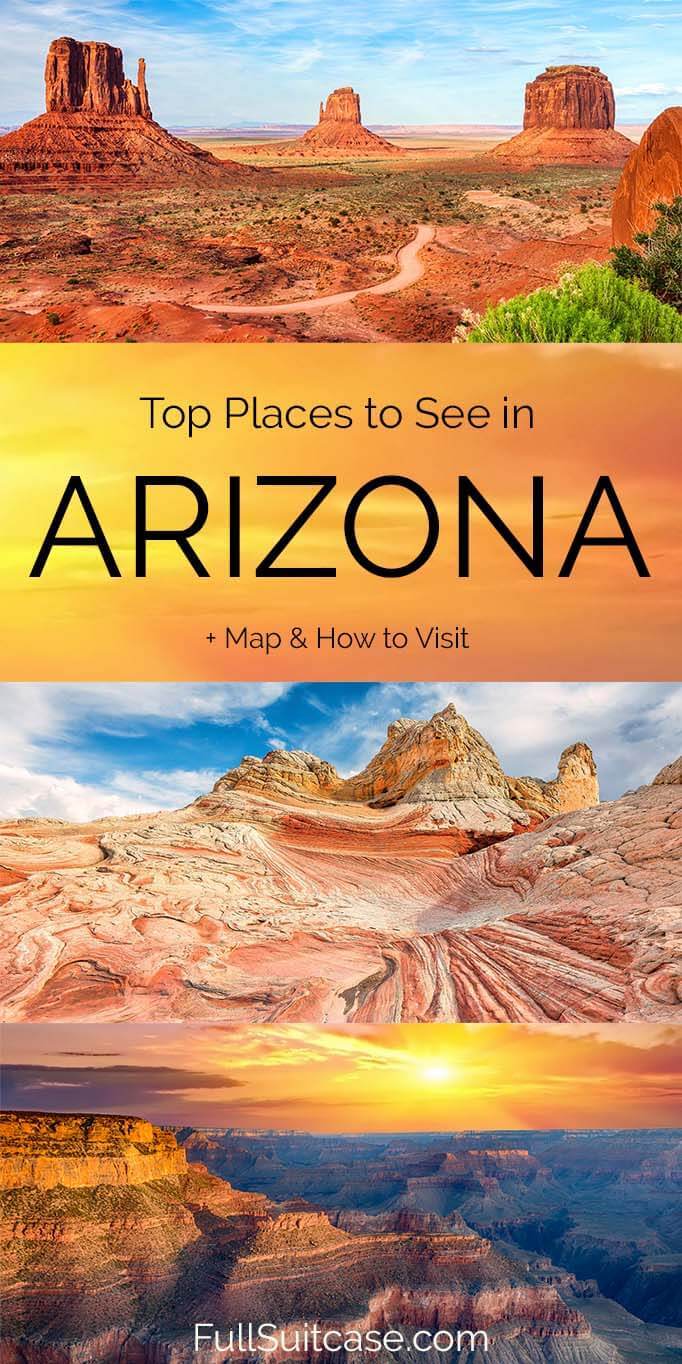


Jurga Rubinovaite
Jurga established Full Suitcase, a top-tier family travel blog with a global audience reaching millions. Her expertise has been highlighted by major platforms such as CNN, BBC, and Lonely Planet. Since 2015, she has provided practical insights, detailed destination guides, and travel recommendations to assist families and friends in organizing memorable journeys.
Need answers? Drop a comment below a relevant post!